
- Home
- Travel Packages
- Top Destination
-
Travel Attraction
By Category
Top Attraction

- Travel Agents
- Car Rentals
- Hotels

About Shamwari Game Reserve Located in the Eastern Cape of South Africa, the Shamwari Game Reserve is a premier safari destination known for its conservation efforts and incredible wildlife viewing opportunities. Spanning over 25,000 hectares of pristine wilderness, Shamwari offers visitors a chance to see the Big 5 (lion, elephant, buffalo, leopard, and rhinoceros) as well as a wide variety of other animal and plant species. Location and Geographical Overview The Shamwari Game Reserve is situated in the Eastern Cape province of South Africa, near the town of Paterson. The reserve is easily accessible from Port Elizabeth, which is approximately a one-hour drive away. Open and Closing Time The Shamwari Game Reserve is open daily from 6:00 am to 6:00 pm. It is important to note that specific activities may have different operating hours, so it is recommended to check with the reserve beforehand. Entry Fee The entry fee to Shamwari Game Reserve varies depending on the type of experience you choose. Day visitors can expect to pay a fee for game drives and other activities, while overnight guests typically book all-inclusive packages that include accommodation, meals, and safari activities. Species-Flora/Fauna Availability Shamwari Game Reserve is home to a wide variety of flora and fauna, including the Big 5, cheetahs, zebras, giraffes, and numerous bird species. The reserve is also committed to conservation efforts, with dedicated programs to protect endangered species and preserve the natural environment. Activities Performed Visitors to Shamwari Game Reserve can enjoy a range of activities, including game drives, guided walks, bird watching, and visits to the Born Free Big Cat Sanctuary. The reserve also offers cultural experiences and wellness activities to enhance your safari experience. Jeep Safari Charges Jeep safari charges at Shamwari Game Reserve vary depending on the duration and type of safari experience you choose. Prices typically include the services of a professional guide and ranger, as well as refreshments during the excursion. Age Criterion and Entry Fee Children under a certain age may not be permitted on certain safari activities at Shamwari Game Reserve. Entry fees for male and female visitors typically do not differ, but discounts may be available for children. It is advisable to check the age requirements and pricing policies before booking your visit. Senior Citizen Facilities Shamwari Game Reserve caters to senior citizens with accessible accommodations, vehicles, and safari activities. Specialized tours and experiences can be arranged for older guests to ensure their comfort and enjoyment during their visit. Best Time to Visit The best time to visit Shamwari Game Reserve is during the dry season, which typically occurs from May to September. During this time, wildlife viewing is at its peak as animals gather around water sources, making sightings more frequent and rewarding. Nearby Places to Visit While visiting Shamwari Game Reserve, you may also want to explore nearby attractions such as Addo Elephant National Park, Grahamstown's historical sites, and the beautiful beaches along the Eastern Cape coastline. These destinations offer a variety of experiences to complement your safari adventure. Vehicle Parking Facility Shamwari Game Reserve provides ample parking facilities for visitors who arrive by car. Whether you are a day visitor or staying overnight, you can rest assured that your vehicle will be safe and secure during your time at the reserve. Rules and Regulations As a conservation-focused reserve, Shamwari Game Reserve has strict rules and regulations in place to ensure the safety of guests and the protection of the environment. These guidelines may include restrictions on off-road driving, noise levels, and interactions with wildlife, so it is important to adhere to the guidelines set forth by the reserve. How to Reach and Other Related Information Shamwari Game Reserve is easily accessible by road from Port Elizabeth, which has an international airport with connections to major cities in South Africa. Visitors can also arrange transfers or private transport to the reserve through reputable tour operators. It is recommended to book your visit in advance to secure accommodations and safari activities during your desired travel dates.
Explore More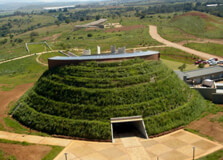
The Cradle of Humankind is a UNESCO World Heritage Site located in Gauteng, South Africa. It is known for its rich fossil heritage, which provides valuable insights into the history of human evolution. The site is home to a network of limestone caves that have yielded numerous fossilized remains of early hominids, as well as other animals and plants from millions of years ago. Location and Geographical Overview The Cradle of Humankind is situated approximately 50 kilometers northwest of Johannesburg and covers an area of around 47,000 hectares. It is characterized by rolling hills, open grasslands, and rocky outcrops, making it a picturesque and unique landscape to explore. Opening and Closing Time The Cradle of Humankind is open to visitors daily from 9:00 am to 5:00 pm. It is advisable to check the official website or contact the visitor center for any changes in operating hours before planning your visit. Entry Fee The entry fee for adults is R120 (South African Rand), while children under the age of 18 and senior citizens over the age of 60 can enjoy a discounted rate of R65. It is important to note that prices are subject to change, so it is recommended to check the latest rates before your visit. Species - Flora/Fauna Availability The Cradle of Humankind is home to a diverse range of plant and animal species, including indigenous trees, grasses, and wildlife such as antelope, zebras, and various bird species. Visitors can enjoy guided tours and walks to observe the local flora and fauna in their natural habitat. Activities Performed Visitors to the Cradle of Humankind can engage in a variety of activities, including guided tours of the fossil sites, hiking trails, birdwatching, and educational programs at the visitor center. The site also offers opportunities for picnicking and exploring the surrounding landscapes. Jeep Safari Charges For those looking to explore the Cradle of Humankind in style, jeep safari tours are available at an additional cost. Prices for jeep safari tours vary depending on the duration and itinerary, so it is recommended to inquire at the visitor center for more information. Age Criterion and Entry Fee Entry fees for the Cradle of Humankind are as follows: - Adults: R120 - Children (under 18): R65 - Senior Citizens (over 60): R65 Children under the age of 6 can enter for free. It is important to carry identification to verify age and eligibility for discounted rates. Senior Citizen Facilities The Cradle of Humankind offers facilities and services tailored to the needs of senior citizens, including accessible pathways, seating areas, and guided tours catered to a more leisurely pace. Visitors are encouraged to inform staff members of any special requirements to ensure a comfortable and enjoyable experience. Best Time to Visit The Cradle of Humankind can be visited throughout the year, but the best time to explore the site is during the cooler months of autumn (March-May) and spring (September-November). These seasons offer pleasant weather conditions for outdoor activities and sightseeing. Nearby Places to Visit While in the Cradle of Humankind area, visitors can also explore other attractions such as the Maropeng Visitor Centre, Sterkfontein Caves, and Rhino and Lion Nature Reserve. These nearby sites offer additional opportunities to learn about the region's natural and cultural heritage. Vehicle Parking Facility There is ample parking available at the Cradle of Humankind for visitors arriving by car or tour bus. Parking facilities are conveniently located near the visitor center and entrance gates, with designated spaces for disabled visitors. Parking fees may apply, so it is advisable to check with staff or signage for more information. Rules and Regulations Visitors to the Cradle of Humankind are expected to adhere to the following rules and regulations: - Respect for the environment and wildlife - No littering or vandalism - Follow designated pathways and trails - Observe any guidelines provided by staff - Photography restrictions in certain areas - Pets are not allowed By following these guidelines, visitors can help preserve the site for future generations to enjoy. How to Reach and Other Related Information The Cradle of Humankind is easily accessible by car from Johannesburg or Pretoria, with well-maintained roads leading to the site. Public transportation options are also available, such as shuttle services and guided tours departing from major cities and towns. For more information on how to reach the Cradle of Humankind and to plan your visit, consult the official website or contact the visitor center for assistance.
Explore More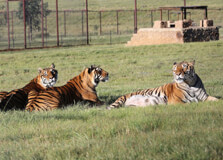
The Bloemfontein Zoo, also known as the Franklin Game Reserve, is a popular tourist destination located in Bloemfontein, South Africa. Founded in 1920, the zoo covers an area of approximately 250 acres and is home to a variety of wildlife species. Location and Geographical Overview The Bloemfontein Zoo is situated at 101 Ray Champion Drive, Bloemfontein, Free State, South Africa. It is located near the city center, making it easily accessible to both locals and tourists. Open and Closing Time The Bloemfontein Zoo is open to visitors from 8:00 am to 5:00 pm daily, including weekends and public holidays. Entry Fee The entry fee for adults is R60, while children under the age of 12 can enter for R30. Senior citizens and students with valid ID can enter for R40. Species - Flora/Fauna Availability The Bloemfontein Zoo is home to a diverse range of flora and fauna, including various species of birds, mammals, reptiles, and plant life. Visitors can explore the different habitats and learn about the conservation efforts being made to protect these species. Activities Performed Visitors to the Bloemfontein Zoo can enjoy a range of activities such as guided tours, animal feeding sessions, and educational programs. There are also picnic areas and playgrounds for families to relax and enjoy the outdoors. Jeep Safari Charges The Bloemfontein Zoo does not offer jeep safari tours at this time. Age Criterion for Male, Female, Children and Their Entry Fee The entry fees for the Bloemfontein Zoo are the same for males and females. Children under 12 years old have a reduced entry fee. Senior citizens and students with valid ID also have a discounted rate. Senior Citizen Facilities Senior citizens visiting the Bloemfontein Zoo can enjoy discounted entry fees and access to wheelchair-friendly pathways around the park. There are also rest areas and seating available throughout the zoo. Best Time to Visit The best time to visit the Bloemfontein Zoo is during the cooler months of the year, from March to November. The weather is more pleasant, and the animals are usually more active during this time. Nearby Places to Visit There are several other attractions near the Bloemfontein Zoo that visitors can explore, including the National Museum, Naval Hill Planetarium, and Oliewenhuis Art Museum. These attractions offer a variety of cultural and historical experiences. Vehicle Parking Facility The Bloemfontein Zoo offers ample parking space for visitors arriving by car. There is a designated parking area near the entrance where visitors can safely park their vehicles. Rules and Regulations Visitors to the Bloemfontein Zoo are required to follow certain rules and regulations to ensure the safety of the animals and other guests. These rules include no smoking, no littering, no feeding of the animals, and staying on designated pathways. How to Reach and Other Related Information The Bloemfontein Zoo is easily accessible by car, taxi, or public transportation. The nearest airport is Bloemfontein Airport, which is approximately a 15-minute drive away. Visitors can also book guided tours or transportation services through the zoo's website.
Explore More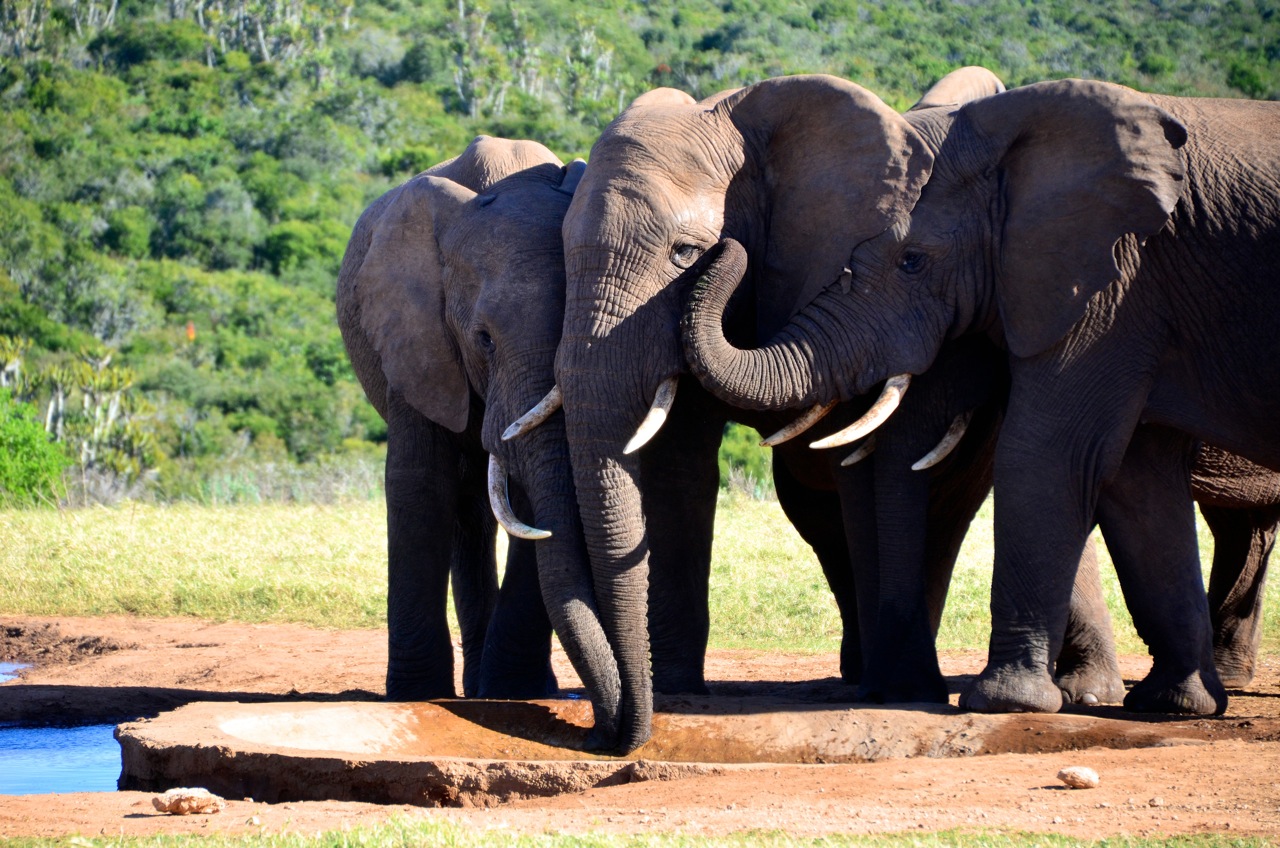
Addo Elephant Park, located in the Eastern Cape of South Africa, is a renowned national park known for its diverse wildlife and impressive population of elephants. With an area of over 1,640 square kilometers, the park offers visitors the opportunity to observe a wide variety of flora and fauna in their natural habitat. Location and Geographical Overview Addo Elephant Park is situated near the town of Addo, approximately 72 kilometers north of Port Elizabeth in the Eastern Cape province of South Africa. The park is nestled in the Sundays River Valley and features a mix of dense forest, open grasslands, and rugged hills that provide a suitable habitat for a range of wildlife. Open and Closing Time The park is typically open to visitors from 7:00 AM to 6:30 PM, allowing ample time for exploration and wildlife spotting. It is advisable to check the official website or contact the park directly for the most up-to-date information on operating hours. Entry Fee Entry fees to Addo Elephant Park vary depending on the type of visitor and the duration of stay. International visitors typically pay a higher fee compared to South African residents. It is recommended to check the official website for accurate pricing information. Species-Flora/Fauna Availability Addo Elephant Park is known for its diverse range of wildlife, including the iconic elephants for which the park is named. Visitors may also spot other animals such as lions, buffalo, rhinos, and various antelope species. The park is also home to a variety of bird species, making it a paradise for birdwatchers. Activities Performed Visitors to Addo Elephant Park can participate in a wide range of activities, including guided game drives, walking safaris, birdwatching, and hiking trails. The park also offers picnic areas and accommodation options for those looking to stay overnight. Jeep Safari Charges Jeep safari charges at Addo Elephant Park vary depending on the duration and type of safari experience chosen. Visitors can opt for guided tours led by experienced rangers who provide insights into the park's wildlife and history. It is advisable to book safari tours in advance to secure a spot. Age Criterion for Male, Female, Children and their Entry Fee The park usually offers discounted entry fees for children and senior citizens, while adult fees apply to male and female visitors. Children under a certain age may be granted free entry, while those above a certain age may be eligible for senior citizen discounts. It is recommended to check the park's official website for detailed age criteria and pricing. Senior Citizen Facilities Addo Elephant Park provides facilities and services tailored to the needs of senior citizens, including wheelchair-accessible paths, designated rest areas, and discounted entry fees. The park staff are trained to assist elderly visitors and ensure their comfort and safety during their visit. Best Time to Visit The best time to visit Addo Elephant Park is during the dry season, from May to September, when wildlife congregates around water sources, making them easier to spot. However, the park is open year-round, and each season offers unique experiences for visitors to enjoy. Nearby Places to Visit While exploring Addo Elephant Park, visitors can also consider visiting nearby attractions such as the Zuurberg Mountain Range, the coastal town of Port Elizabeth, and the charming town of Addo with its local markets and historical sites. These destinations offer a diverse range of experiences that complement a visit to the park. Vehicle Parking Facility Addo Elephant Park provides designated parking areas for visitors arriving by car. The parking facilities are secure and easily accessible, allowing visitors to explore the park without worrying about the safety of their vehicles. It is advisable to follow the park's guidelines on parking to ensure a pleasant experience for all visitors. Rules and Regulations When visiting Addo Elephant Park, it is important to abide by the park's rules and regulations to ensure the safety of both visitors and wildlife. Some common rules include refraining from feeding the animals, staying inside designated viewing areas, and respecting the natural environment. By following these guidelines, visitors can enjoy a responsible and sustainable wildlife viewing experience. How to Reach and Other Related Information Addo Elephant Park is easily accessible by road from major cities such as Port Elizabeth, which is approximately a one-hour drive away. Visitors can also opt for guided tours or self-drive options to reach the park. It is advisable to plan ahead and check the park's official website for detailed directions and additional information on accommodation, dining options, and activities available within the park.
Explore More
The Amakhala Game Reserve is located in the Eastern Cape of South Africa, near the town of Paterson. It covers over 18,000 acres of pristine wilderness and is home to a wide variety of wildlife species. Location and Geographical Overview The Amakhala Game Reserve is situated along the Bushmans River, providing a diverse landscape of plains, forests, and valleys. The reserve is part of a larger conservation area, allowing animals to roam freely in their natural habitat. Open and Closing Time The game reserve is open daily from 6:00 AM to 9:00 PM, allowing visitors to explore and experience the wildlife throughout the day and into the evening. Entry Fee The entry fee for the Amakhala Game Reserve varies depending on the type of experience you choose, ranging from day visits to luxury accommodations. Prices start at $50 per person for a day visit. Species-Flora/Fauna Availability The Amakhala Game Reserve is home to the Big Five - lions, elephants, buffalo, leopards, and rhinos. In addition to these iconic animals, visitors can also see giraffes, zebras, antelopes, and a variety of bird species in their natural habitat. Activities Performed Visitors to the Amakhala Game Reserve can enjoy a variety of activities, including game drives, guided walks, birdwatching, and boat cruises along the Bushmans River. There are also cultural experiences available, such as visits to local communities and historical sites. Jeep Safari Charges Jeep safari charges at the Amakhala Game Reserve start at $100 per person for a 2-hour guided game drive. Longer safari experiences and private tours are also available at higher rates. Age Criterion for Male, Female, Children, and Entry Fee Children under the age of 4 are usually free to enter the game reserve, while discounted rates are available for children aged 4-12. Adult entry fees apply to individuals aged 13 and over, with special rates for senior citizens. Senior Citizen Facilities Senior citizens visiting the Amakhala Game Reserve can enjoy special facilities, such as accessible accommodations, transportation, and guided tours tailored to their needs and interests. Best Time to Visit The best time to visit the Amakhala Game Reserve is during the dry season, from April to September, when wildlife is more easily spotted near water sources. Mornings and evenings are also ideal for game viewing. Nearby Places to Visit Located in the Eastern Cape, the Amakhala Game Reserve is close to other popular attractions such as Addo Elephant National Park, the Garden Route, and the coastal towns of Port Elizabeth and Grahamstown. Vehicle Parking Facility Visitors to the Amakhala Game Reserve can use the designated parking areas near the entrance gate. Parking is included in the entry fee, and attendants are available to assist with finding a spot. Rules and Regulations Visitors to the Amakhala Game Reserve are expected to follow certain rules and regulations to ensure the safety of themselves and the animals. These include staying inside designated vehicles during game drives, refraining from feeding the wildlife, and respecting the natural environment. How to Reach and Other Related Information The Amakhala Game Reserve is easily accessible by road from major cities in the Eastern Cape, such as Port Elizabeth and Grahamstown. Visitors can also fly into Port Elizabeth Airport and arrange transportation to the reserve. Accommodations within the reserve offer shuttle services for guests.
Explore More
Camdeboo National Park is a picturesque park located in the Eastern Cape province of South Africa. The park is known for its unique landscape and rich biodiversity, making it a popular destination for nature lovers and outdoor enthusiasts. Location and Geographical Overview The Camdeboo National Park is situated in the Great Karoo region, near the town of Graaff-Reinet. It covers an area of approximately 19,000 hectares and is home to a diverse range of habitats, including mountains, valleys, and grasslands. Open and Closing Time The park is open to visitors from 6:00 am to 6:00 pm daily. Entry Fee The entry fee for the Camdeboo National Park is R50 for adults and R30 for children under the age of 12. Senior citizens (over the age of 60) can enter the park for R35. Species-Flora/Fauna Availability The park is home to a wide variety of plant and animal species, including the famous Camdeboo dwarf chameleon, Cape mountain zebra, and black wildebeest. Visitors can also see unique vegetation such as spekboom and Karoo succulents. Activities Performed Visitors to the park can enjoy a range of activities, including game drives, bird watching, hiking, and picnicking. The park also offers guided jeep safaris for those who want to explore the area with an experienced guide. Jeep Safari Charges The cost of a guided jeep safari in the Camdeboo National Park is R500 per person. Age Criterion and Entry Fee The entry fee for adults is R50, for children under 12 years old is R30, and for senior citizens over 60 is R35. Senior Citizen Facilities Senior citizens visiting the park can enjoy discounted entry fees and access to facilities such as restrooms and picnic areas. Best Time to Visit The best time to visit the Camdeboo National Park is during the cooler months of the year, from April to September. The weather is more pleasant, and the wildlife is more active during this time. Nearby Places to Visit Some of the nearby attractions to the Camdeboo National Park include the Valley of Desolation, Nqweba Dam, and the town of Graaff-Reinet with its historic buildings and museums. Vehicle Parking Facility The park offers ample parking space for visitors, with designated parking areas near the entrance and main attractions. Rules and Regulations Visitors to the park are required to adhere to certain rules and regulations to ensure the safety of themselves and the wildlife. These include staying on designated paths, not feeding the animals, and avoiding littering. How to Reach and Other Related Information The Camdeboo National Park can be reached by car from major cities such as Port Elizabeth and Bloemfontein. It is approximately a five-hour drive from Port Elizabeth and a three-hour drive from Bloemfontein. The park also has accommodation options for those who wish to stay overnight and explore the area further. Overall, Camdeboo National Park offers a unique and memorable experience for nature lovers and provides a glimpse into the diverse landscape and wildlife of the Eastern Cape region of South Africa.
Explore More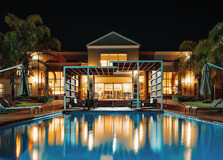
Chelmsford Nature Reserve, KwaZulu Natal
Chelmsford Nature Reserve is a pristine natural wonderland located in the picturesque province of KwaZulu Natal, South Africa. The reserve covers an area of 35,000 hectares and is home to a diverse range of flora and fauna, making it a popular destination for nature lovers and wildlife enthusiasts. Location and Geographical Overview The Chelmsford Nature Reserve is situated in the heart of the Battlefields region, near the town of Newcastle. The reserve is characterized by its rolling hills, lush grasslands, and stunning views of the Drakensberg mountains. It is part of the uKhahlamba-Drakensberg Park, a UNESCO World Heritage Site renowned for its natural beauty and cultural significance. Open and Closing Time The Chelmsford Nature Reserve is open to visitors from 8:00 am to 5:00 pm, seven days a week. It is important to note that entry to the reserve is prohibited outside of these hours. Entry Fee There is a nominal entry fee required to access the Chelmsford Nature Reserve. The fee is R50 for adults and R25 for children under the age of 12. Senior citizens above the age of 60 can enjoy a discounted rate of R30. Species-Flora/Fauna Availability The Chelmsford Nature Reserve is home to a wide variety of plant and animal species, including indigenous grasses, trees, birds, and mammals. Visitors can expect to see species such as zebra, wildebeest, impala, and numerous bird species while exploring the reserve. Activities Performed There are several activities that visitors can enjoy at the Chelmsford Nature Reserve, including hiking, bird watching, picnicking, and game viewing. The reserve also offers guided jeep safaris for those looking to get up close and personal with the wildlife. Jeep Safari Charges The cost of a jeep safari at the Chelmsford Nature Reserve is R250 per person. The safari includes a guided tour of the reserve in an open-air vehicle, allowing visitors to observe the wildlife in their natural habitat. Age Criterion and Entry Fee For male and female visitors, the entry fee is R50 for adults and R25 for children under 12. Senior citizens above the age of 60 can enter the reserve for R30. Children under the age of 4 are allowed free entry. Senior Citizen Facilities The Chelmsford Nature Reserve offers special facilities for senior citizens, including designated parking areas, rest areas, and accessible trails. The reserve staff are also trained to assist elderly visitors and ensure their comfort and safety during their visit. Best Time to Visit The best time to visit the Chelmsford Nature Reserve is during the cooler months of the year, from April to September. During this time, the weather is mild, and the wildlife is more active, making for optimal game viewing opportunities. Nearby Places to Visit There are several other attractions near the Chelmsford Nature Reserve that visitors can explore, including the historic town of Newcastle, the Amajuba Memorial, and the Majuba Mountain. These sites offer a glimpse into the rich cultural heritage and history of the region. Vehicle Parking Facility The Chelmsford Nature Reserve provides ample parking space for visitors, including designated parking areas for cars, buses, and RVs. There is no additional cost for parking, and security personnel are stationed on-site to ensure the safety of vehicles. Rules and Regulations Visitors to the Chelmsford Nature Reserve are required to adhere to certain rules and regulations to ensure the safety of themselves and the wildlife. Some of the key guidelines include refraining from feeding the animals, staying on designated trails, and refraining from littering. How to Reach and Other Related Information The Chelmsford Nature Reserve is easily accessible by car from major cities such as Durban and Johannesburg. Visitors can take the N3 highway to Newcastle, where they can follow signs to the reserve. It is recommended to bring plenty of water, sunscreen, and comfortable walking shoes when visiting the reserve. Overall, the Chelmsford Nature Reserve offers a unique opportunity to experience the natural beauty and wildlife of KwaZulu Natal in a tranquil and unspoiled setting. Whether you are a nature enthusiast, avid hiker, or wildlife lover, a visit to this pristine reserve is sure to be a memorable experience.
Explore More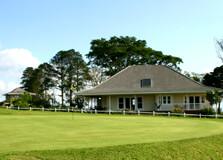
Eshowe Country Club is a hidden gem in the lush landscapes of KwaZulu-Natal, South Africa. Located in the historic town of Eshowe, the club is one of the oldest and most scenic golf courses in the region. Surrounded by the Dlinza Forest, this country club offers a peaceful escape into nature along with top-class sporting and leisure facilities. Whether you’re an avid golfer, a tennis player, or a traveler seeking relaxation, Eshowe Country Club provides a unique blend of history, natural beauty, and recreation. How to Reach Eshowe Country Club, KwaZulu-Natal Eshowe Country Club is located in Eshowe, a town in the Zululand district of KwaZulu-Natal. It is around 140 kilometers north of Durban, making it easily accessible by car. The drive from Durban takes approximately 1.5 to 2 hours via the N2 and R66 roads. If you're coming from Richards Bay, the drive is about 90 km and takes roughly 1 hour. Public transport options are limited, so traveling by private vehicle is recommended. Clear signboards are placed throughout Eshowe, guiding visitors to the country club. GPS services and map applications also provide accurate directions to the club entrance. Weather at Eshowe Country Club, KwaZulu-Natal Eshowe enjoys a subtropical climate, making the country club accessible and enjoyable throughout the year. Summers (November to March) are warm and humid, with average temperatures ranging from 22°C to 30°C. Rainfall is more frequent during this season, mostly in the form of afternoon showers. Winter (May to August) is mild and dry, with average temperatures between 10°C and 24°C, providing perfect weather for golfing and walking in the nearby forests. Spring and autumn bring pleasant, sunny days with cooler evenings, ideal for outdoor activities. Timings for Visit Eshowe Country Club is open throughout the week. Typical operating hours are: Golf course: 7:00 AM – 6:00 PM Clubhouse and bar: 10:00 AM – 9:00 PM Restaurant: Open for lunch and dinner (timings may vary based on bookings and events) Visitors are advised to call ahead for tee time bookings, restaurant availability, or events. Why Famous for Eshowe Country Club, KwaZulu-Natal? Eshowe Country Club is famous for its picturesque 18-hole golf course that weaves through natural forested areas, providing golfers with both a challenge and a visual treat. What makes it truly unique is that it is one of the only golf courses in the country where golfers share the green with wildlife like monkeys and various bird species. Besides golf, the club is renowned for its welcoming atmosphere, social events, and its location near the famous Dlinza Forest and aerial boardwalk. It is also a gathering place for local sports and community events, making it a hub of activity in the town. Entry and Visit Details about Eshowe Country Club, KwaZulu-Natal Visitors are welcome at Eshowe Country Club, and entry to the clubhouse and grounds is usually free. However, fees apply for the use of the golf course and other sports facilities: Green fees for golf range between R150 – R300 depending on the day and time. Golf cart and equipment rental are available at additional costs. Tennis court and bowls usage may have nominal fees for non-members. The club also offers short-term membership options for tourists and visitors who plan extended stays in Eshowe. Booking in advance is recommended, especially during weekends or holidays. History and Architecture Eshowe Country Club has a long and proud history that dates back to the early 20th century. Established in 1907, the club is one of the oldest in KwaZulu-Natal. The architecture of the main clubhouse retains a colonial charm with modern upgrades. Its design blends old-world elegance with a rustic, forest-inspired atmosphere. Over the decades, the club has evolved to meet the changing needs of the community while preserving its historical identity. The course layout and fairways reflect thoughtful landscaping that integrates with the surrounding natural forest, creating a peaceful ambiance that feels far removed from city life. Things to Do at Eshowe Country Club, KwaZulu-Natal The country club offers a wide variety of activities suitable for individuals, families, and groups: Golfing: The main attraction is the scenic 18-hole course, with tree-lined fairways and birdlife. Tennis: Play a friendly match or join local tournaments on the well-maintained tennis courts. Bowls: Lawn bowls is a popular social sport at the club. Dining: Enjoy meals or snacks at the club’s restaurant, which serves local and continental dishes. Relaxing at the Bar: The bar is a cozy place to unwind, meet locals, or watch a rugby game. Explore Dlinza Forest: Located nearby, it offers walking trails and a canopy boardwalk with stunning views. Attend Events: The club hosts regular social evenings, themed dinners, live music, and charity events. Facts about Eshowe Country Club, KwaZulu-Natal The club was founded in 1907, making it over a century old. The golf course is one of the few in the world bordering an indigenous forest. Eshowe is known as the oldest European settlement in Zululand. The name “Eshowe” comes from the Zulu word for the sound of wind blowing through trees. The club is involved in various community initiatives and supports local sports development. Tips about Eshowe Country Club, KwaZulu-Natal Call ahead to book tee times, especially on weekends. Wear comfortable sportswear and bring sunscreen if you plan to golf or play outdoors. Bring binoculars for birdwatching in the nearby Dlinza Forest. Check the club’s notice board or website for upcoming events and tournaments. Visit the club during spring or autumn for the best weather and scenery. If you’re not a golfer, enjoy a quiet meal on the veranda with a view of the course and forest beyond.
Explore More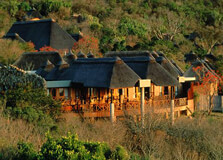
Ithala Game Reserve is a stunning wildlife sanctuary located in the province of KwaZulu-Natal, South Africa. It is known for its diverse landscapes, ranging from deep valleys to rugged mountain peaks, as well as its rich biodiversity. The reserve covers an area of over 30,000 hectares and is home to a wide variety of plant and animal species, making it a popular destination for nature enthusiasts and wildlife lovers. Location and Geographical Overview The Ithala Game Reserve is situated in the northern region of KwaZulu-Natal, approximately 400 kilometers from Durban. The reserve is nestled in the rugged, mountainous terrain of the Ngotshe Mountains, offering visitors breathtaking views of the surrounding landscape. Open and Closing Time The Ithala Game Reserve is open daily from 6:00 am to 6:00 pm, allowing visitors ample time to explore the reserve and enjoy its natural beauty. However, it is recommended to check the official website or contact the reserve directly for any changes in operating hours. Entry Fee The entry fee for the Ithala Game Reserve varies depending on the age and residency status of the visitor. South African residents typically pay a lower fee compared to international tourists. It is advisable to check the official website or contact the reserve for the most up-to-date pricing information. Species-Flora/Fauna Availability The Ithala Game Reserve is home to a wide range of plant and animal species, including elephants, rhinos, giraffes, zebras, and various bird species. The diverse flora and fauna of the reserve provide a unique opportunity for visitors to observe and appreciate the beauty of nature up close. Activities Performed Visitors to the Ithala Game Reserve can enjoy a variety of activities, including guided game drives, hiking trails, birdwatching, and picnicking. The reserve also offers cultural experiences, such as visits to ancient rock art sites and traditional homesteads, providing a holistic wildlife experience. Jeep Safari Charges Jeep safari charges at the Ithala Game Reserve vary depending on the duration and type of safari experience chosen. Visitors can opt for guided game drives led by experienced rangers, providing an opportunity to spot wildlife and learn about the reserve's conservation efforts. Age Criterion for Male, Female, Children and their Entry Fee The Ithala Game Reserve may have specific age criteria for entry, with different pricing structures for males, females, and children. It is recommended to inquire about any age restrictions and entry fees for different demographics before planning a visit to the reserve. Senior Citizen Facilities The Ithala Game Reserve may offer special facilities and discounts for senior citizens, making it easier for older visitors to explore the reserve comfortably. Senior citizens can enjoy guided tours, accessible amenities, and discounted entry fees, enhancing their wildlife experience. Best Time to Visit The best time to visit the Ithala Game Reserve is during the dry season, which typically falls between May and September. The cooler temperatures and lack of rainfall make it easier to spot wildlife, making for an optimal safari experience. However, the reserve remains open year-round, with each season offering its unique charms. Nearby Places to Visit For those looking to explore beyond the Ithala Game Reserve, there are several nearby attractions worth visiting. These include the Pongola Game Reserve, Hluhluwe-Imfolozi Park, and the captivating Zulu cultural villages, offering a diverse range of experiences for travelers. Vehicle Parking Facility The Ithala Game Reserve provides ample parking facilities for visitors arriving by car, ensuring a hassle-free experience. Visitors can safely park their vehicles and proceed to explore the reserve, knowing that their transportation is secure and easily accessible. Rules and Regulations Visitors to the Ithala Game Reserve are expected to follow certain rules and regulations to ensure the safety of wildlife and maintain the reserve's pristine environment. These regulations may include guidelines on behavior, interaction with animals, waste disposal, and respecting the natural habitat. How to Reach and Other Related Information The Ithala Game Reserve is accessible by road, with well-maintained routes leading to the entrance of the reserve. Visitors can opt to drive from major cities like Durban or Johannesburg or arrange for organized tours with transportation included. Additionally, it is advisable to book accommodation in advance and check for any special events or activities happening during your visit. Overall, the Ithala Game Reserve offers a captivating wildlife experience amidst the stunning landscapes of KwaZulu-Natal, making it a must-visit destination for nature enthusiasts and adventure seekers alike.
Explore More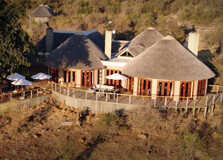
Nambiti Game Reserve is located in the heart of Kwazulu Natal, South Africa, and is a premier safari destination known for its breathtaking landscapes and abundant wildlife. The reserve spans over 22,000 acres of diverse terrain, including open plains, dense bushveld, and winding rivers. Location and Geographical Overview The reserve is situated in the Nambiti Private Game Reserve, which is nestled in the picturesque hills of the Drakensberg Mountains. It is easily accessible from major cities like Durban and Johannesburg, making it a popular choice for both local and international visitors. Open and Closing Time The Nambiti Game Reserve is open daily from 6:00 am to 6:00 pm, allowing visitors ample time to explore the diverse landscapes and spot the incredible wildlife that call the reserve home. Entry Fee There is an entry fee to access the Nambiti Game Reserve, which varies depending on the type of experience you choose. Visitors can opt for day trips, overnight stays, or luxury safari packages. Species-Flora/Fauna Availability The Nambiti Game Reserve is home to a wide variety of wildlife, including the Big Five (lion, leopard, elephant, rhinoceros, and buffalo), as well as numerous other species such as giraffe, zebra, wildebeest, and various antelope. The reserve is also a haven for bird watchers, with over 250 bird species recorded in the area. Activities Performed Visitors to the Nambiti Game Reserve can enjoy a range of activities, including game drives, guided bush walks, bird watching, and stargazing. The reserve also offers cultural experiences, where guests can learn about the local Zulu heritage and traditions. Jeep Safari Charges Jeep safari charges at the Nambiti Game Reserve vary depending on the type of experience you choose, with options for day drives, morning and evening safaris, and private tours available. It is recommended to book in advance to secure your spot. Age Criterion and Entry Fee Children under the age of 6 are not permitted on game drives for safety reasons. The entry fee for adults and children over the age of 6 varies depending on the type of experience selected. Senior citizens may be eligible for discounted rates, so it is advisable to inquire about special offers when booking. Senior Citizen Facilities The Nambiti Game Reserve is committed to providing a comfortable and enjoyable experience for all visitors, including senior citizens. The lodge facilities are designed to be accessible, with options for special dietary needs and assistance available upon request. Best Time to Visit The best time to visit the Nambiti Game Reserve is during the dry winter months from May to September, when the vegetation is sparse, making it easier to spot wildlife. However, the reserve is open year-round, and each season offers a unique experience. Nearby Places to Visit Located in the heart of Kwazulu Natal, the Nambiti Game Reserve is surrounded by other popular tourist attractions, including the Drakensberg Mountains, the Battlefields Route, and the picturesque town of Ladysmith. Visitors can explore the rich history and diverse landscapes of the region. Vehicle Parking Facility The Nambiti Game Reserve offers secure parking facilities for visitors who choose to self-drive to the reserve. There is ample parking available, and security measures are in place to ensure the safety of vehicles. Rules and Regulations Visitors to the Nambiti Game Reserve are required to adhere to certain rules and regulations to ensure the safety of both guests and wildlife. These include staying in designated areas, following the guidance of experienced guides, and respecting the natural environment. How to Reach and Other Related Information The Nambiti Game Reserve is easily accessible by road from major cities like Durban and Johannesburg, with well-maintained highways leading to the reserve. Visitors can also arrange transfers or flights to nearby airports for added convenience. It is advisable to book accommodation and activities in advance to secure your preferred dates and experiences.
Explore More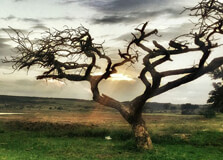
Spioenkop Dam Nature Reserve is a beautiful and historically rich destination located in the heart of KwaZulu-Natal, South Africa. Nestled between the towns of Ladysmith and Bergville, this tranquil reserve surrounds the vast Spioenkop Dam and offers breathtaking views of the nearby Drakensberg Mountains. Known for its diverse wildlife, outdoor recreational activities, and historical significance, Spioenkop Dam Nature Reserve attracts nature lovers, bird watchers, history buffs, and families looking for a peaceful escape. How to Reach Spioenkop Dam Nature Reserve, KwaZulu-Natal Spioenkop Dam Nature Reserve is located approximately 35 km from Ladysmith and about 15 km from Bergville, making it accessible by car from various major cities in the region. From Durban, the reserve is about a 3-hour drive (roughly 250 km) via the N3 highway. From Johannesburg, it takes around 4 hours (approximately 360 km), also via the N3 and R616 roads. The reserve can be accessed by turning off at Bergville or Winterton and following signage along rural roads. Private transportation is the best option, as there are limited public transport services to the area. GPS navigation or asking locals for directions once you're nearby is recommended. Weather at Spioenkop Dam Nature Reserve, KwaZulu-Natal The weather at Spioenkop Dam Nature Reserve is typically moderate and pleasant, ideal for outdoor activities. Summer (October to March) is warm, with temperatures ranging from 20°C to 35°C. Occasional afternoon thunderstorms are common during this season, contributing to the lush greenery. Winter (May to August) is cooler and drier, with daytime temperatures ranging between 10°C and 25°C. The crisp air and clear skies during winter make it a great time for game viewing and hiking. Spring and autumn offer mild, comfortable weather and fewer crowds, making them ideal for visiting. Timings for Visit Spioenkop Dam Nature Reserve is generally open daily from sunrise to sunset. The main gate usually operates from 6:00 AM to 6:00 PM. Visitors who plan to stay overnight in chalets or camping sites should check-in within these hours. It's advisable to confirm opening times during public holidays or off-peak seasons, as they may vary slightly. Why Famous for Spioenkop Dam Nature Reserve, KwaZulu-Natal? Spioenkop Dam Nature Reserve is famous for its scenic beauty, rich biodiversity, and historical importance. The reserve is located near the site of the Battle of Spioenkop, one of the most dramatic conflicts during the Second Anglo-Boer War in 1900. The hilltop battlefield overlooks the dam and is preserved as a heritage site. In addition to its history, the reserve is a popular destination for water sports, fishing, birdwatching, and wildlife viewing. The serene Spioenkop Dam is perfect for canoeing, sailing, and boating, while the surrounding grasslands and woodlands host a wide range of animals including white rhino, giraffe, zebra, and several antelope species. Entry and Visit Details about Spioenkop Dam Nature Reserve, KwaZulu-Natal Entry to Spioenkop Dam Nature Reserve is affordable, with a conservation fee charged per person and per vehicle. As of recent updates, adults can expect to pay around R40–R60, while children under 12 pay less. Fees may vary slightly for international visitors or during peak seasons. Accommodation options include rustic chalets, self-catering cottages, and camping sites. Booking in advance is recommended, especially during school holidays and long weekends. Braai (barbecue) facilities, picnic spots, and ablution blocks are available throughout the park, offering comfort for day and overnight visitors. History and Architecture Spioenkop Dam was constructed in the 1960s to supply water to the surrounding areas. The architecture of the dam includes an impressive embankment and spillway that still function efficiently. The dam's design blends with the natural landscape, enhancing the area’s scenic charm. Nearby, Spioenkop Hill is a site of great historical importance. The Battle of Spioenkop took place here in January 1900 during the Anglo-Boer War. British and Boer forces fought for control of the hill, resulting in a tragic loss of life. The hilltop memorial includes graves, trenches, and information plaques, providing a solemn but fascinating insight into South Africa’s colonial history. Things to Do at Spioenkop Dam Nature Reserve, KwaZulu-Natal Visitors to the reserve can enjoy a variety of outdoor and educational activities: Game Viewing: Explore the park and spot animals like white rhino, giraffe, wildebeest, and kudu. Bird Watching: The reserve is home to over 250 species of birds, making it ideal for birding enthusiasts. Water Sports: Enjoy boating, sailing, canoeing, and windsurfing on the expansive Spioenkop Dam. Fishing: The dam is stocked with fish such as bass and carp—great for recreational anglers. Hiking and Nature Trails: Take guided or self-guided walks through the bushveld, enjoying scenic views and wildlife. Historical Battlefield Tour: Visit Spioenkop Hill to learn about the famous battle and view the memorials and war graves. Picnicking and Braai: Use the many picnic areas and braai stands scattered throughout the reserve. Facts about Spioenkop Dam Nature Reserve, KwaZulu-Natal The reserve covers approximately 60 square kilometers, with the dam at its center. Spioenkop means "hill of spies" in Afrikaans, a reference to its vantage point. The Battle of Spioenkop influenced military tactics and is studied in war academies worldwide. Winston Churchill and Mahatma Gandhi were both present during the Anglo-Boer War and near the Spioenkop area. The dam supplies water to Ladysmith and parts of the uThukela District Municipality. Tips about Spioenkop Dam Nature Reserve, KwaZulu-Natal Bring binoculars for better views of birds and distant wildlife. Pack sunscreen, hats, and insect repellent, especially in summer. Always carry drinking water and snacks if exploring remote parts of the reserve. Respect wildlife—keep a safe distance and don’t feed animals. Check road conditions if visiting during rainy seasons, as some roads may become muddy. Visit the battlefield early in the morning or late afternoon for the best lighting and fewer crowds. Book accommodations early during school holidays or public holiday weekends.
Explore More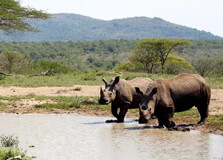
Hluhluwe Umfolozi Game Reserve
Hluhluwe Umfolozi Game Reserve, located in the heart of KwaZulu-Natal, South Africa, is one of the oldest and most renowned game reserves in Africa. Established in 1895, the reserve is world-famous for its conservation efforts, particularly the successful rescue of the white rhinoceros from the brink of extinction. Spanning over 96,000 hectares, the reserve offers rich biodiversity, stunning landscapes, and a wide array of wildlife, including the Big Five: lion, leopard, elephant, buffalo, and rhinoceros. It consists of two formerly separate reserves—Hluhluwe in the north and Umfolozi (now spelled iMfolozi) in the south. How to Reach Hluhluwe Umfolozi Game Reserve, KwaZulu-Natal The reserve is easily accessible by road and is situated about 280 km north of Durban. Here are the most common travel options: By Car: From Durban, take the N2 highway north. The main entrance gates are Memorial Gate (for Hluhluwe) and Nyalazi Gate (for iMfolozi), which are both well-signposted and accessible by most vehicles. The drive takes around 3.5 to 4 hours. By Air: The nearest airport is King Shaka International Airport (Durban). From there, you can rent a car or book a guided tour. By Tour Operator: Several guided safari companies in Durban and St Lucia offer day trips and overnight packages to the reserve. Weather at Hluhluwe Umfolozi Game Reserve The climate is typically subtropical. Summers (November to March) are hot and humid, with daytime temperatures reaching up to 35°C. Rainfall is most common in summer, supporting the lush vegetation. Winters (May to August) are dry and cooler, with pleasant temperatures ranging from 10°C to 25°C. The dry season is ideal for wildlife viewing as animals gather around water sources and visibility improves due to less vegetation. Timings to Visit Hluhluwe Umfolozi Game Reserve is open daily: Opening hours: 5:00 AM – 7:00 PM in summer; 6:00 AM – 6:00 PM in winter The best time to visit is during the dry season from May to September for optimal game viewing. Early morning and late afternoon are the best times of the day for game drives. Why Famous for Hluhluwe Umfolozi Game Reserve, KwaZulu-Natal? Hluhluwe Umfolozi is internationally celebrated for several reasons: It is the oldest proclaimed nature reserve in Africa. It was the focal point of the "Operation Rhino" conservation initiative in the 1950s and 60s, which saved the southern white rhino from extinction. It is one of the few parks in Africa where you can see all of the Big Five in their natural habitat. It features diverse habitats, from dense forests to open savannah and riverine ecosystems. Entry and Visit Details Visitors must pay a conservation fee at the gate: South African Residents: Approximately R70 per adult, R35 per child International Visitors: Approximately R240 per adult, R120 per child The park has several well-maintained rest camps, self-catering chalets, tented camps, and picnic spots. Hluhluwe Hilltop Camp and iMfolozi Mpila Camp are the two main accommodation areas offering guided walks, night drives, and game drives. History and Architecture The reserve’s history dates back to 1895 when the area was declared protected to conserve dwindling populations of white rhinoceroses. Historically, the iMfolozi area was the royal hunting ground of Zulu kings, including Shaka Zulu. Remnants of Zulu culture and battlefields from the Anglo-Zulu War still echo in the surrounding region. The park’s architecture is largely in harmony with its environment. Accommodation and facilities are built with thatched roofs and stone or timber, blending well with the natural surroundings and minimizing environmental impact. Things to Do at Hluhluwe Umfolozi Game Reserve Game Drives: Conducted in your own vehicle or with park rangers, game drives offer sightings of lions, rhinos, elephants, zebras, and more. Guided Walks: Accompanied by armed guides, these walks let you explore the bush on foot and learn about tracking, plants, and birdlife. Bird Watching: With over 340 species recorded, it’s a paradise for bird lovers. Photography: The scenic vistas and wildlife provide excellent opportunities for photography, especially during golden hours. Picnicking: Several shaded picnic areas with restrooms are available for day visitors. Educational Tours: Ideal for schools and eco-tourists interested in conservation and African ecology. Facts about Hluhluwe Umfolozi Game Reserve The reserve is over 120 years old—one of the oldest in the world. It is home to the largest population of white rhinos in the world. There are more than 86 mammal species and over 340 bird species. The park was originally split into two separate areas: Hluhluwe and iMfolozi, which were merged in the 1980s. It contains several archaeological and cultural sites related to Zulu heritage. Tips about Hluhluwe Umfolozi Game Reserve, KwaZulu-Natal Arrive early in the morning or late afternoon for the best animal sightings. Carry binoculars, a camera with zoom lens, and plenty of water and snacks. Follow park rules strictly—do not feed animals or get out of your vehicle in undesignated areas. Fuel up before entering; there are no petrol stations inside the reserve. Wear neutral-colored clothing and sunscreen, and bring insect repellent. Book accommodation in advance, especially during peak seasons like school holidays and public holidays.
Explore MoreLuxury South African Safari
7 Days/ 6 Night
Limpopo - Johannesburg - Kapama
10 Day Youth Leadership Tour Itinerary For South Africa
10 Days/ 9 Night
Cape Town - Johannesburg
30 Days Volunteer Program South Africa Tour
30 Days/ 29 Night
Garden Route - Cape Town - Johannesburg
Special Needs Family Tour - Cape Town
8 Days/ 7 Night
Cape Town
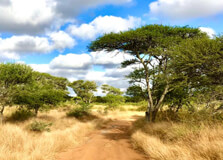
The Polokwane Game Reserve, located in the Limpopo province of South Africa, is a haven for nature lovers and wildlife enthusiasts. Covering an area of approximately 3200 hectares, this reserve offers a unique opportunity to observe a wide variety of flora and fauna in their natural habitat. Location and Geographical Overview The Polokwane Game Reserve is situated just outside the city of Polokwane, making it easily accessible for both locals and tourists. The reserve is characterized by its diverse landscape, which includes open grasslands, rocky hills, and dense bushveld. Open and Closing Time The Polokwane Game Reserve is open to visitors every day of the week from 6:00 am to 6:00 pm. It is important to note that the gates close promptly at 6:00 pm, so visitors should plan their visit accordingly. Entry Fee There is a nominal entry fee for visitors to the Polokwane Game Reserve, which helps to support conservation efforts and wildlife management within the reserve. The entry fee for adults is R50, while children under the age of 12 can enter for R30. Species-Flora/Fauna Availability The Polokwane Game Reserve is home to a wide variety of flora and fauna, including several species of antelope, zebra, giraffe, and other wildlife. Visitors can also spot numerous bird species, making it a paradise for birdwatchers. Activities Performed Visitors to the Polokwane Game Reserve can enjoy a range of activities, including game drives, guided walks, and birdwatching excursions. The reserve also offers picnic spots and braai facilities, allowing visitors to relax and enjoy a meal in the midst of nature. Jeep Safari Charges For those looking to explore the reserve in a more adventurous way, jeep safaris are available at an additional cost. The charges for a jeep safari vary depending on the duration of the excursion and the number of participants, with prices starting from R300 per person. Age Criterion and Entry Fee For male and female visitors, the entry fee is the same as mentioned earlier. Children under the age of 12 can enter for a reduced fee of R30. Seniors citizens, however, can avail a discount on the entry fee, paying only R40 to enjoy the reserve. Senior Citizen Facilities The Polokwane Game Reserve is equipped to cater to the needs of senior citizens, with designated rest areas and facilities available throughout the reserve. Seniors can also opt for guided tours or special activities tailored to their comfort and convenience. Best Time to Visit The best time to visit the Polokwane Game Reserve is during the cooler months of the year, between May and September. During this time, the weather is pleasant, and wildlife viewing opportunities are abundant, making it an ideal time for a safari adventure. Nearby Places to Visit Located in close proximity to Polokwane, visitors to the Polokwane Game Reserve can explore other attractions in the area, such as the Bakone Malapa Open-Air Museum and the Polokwane Bird and Reptile Park. These nearby places offer additional opportunities to learn about the culture and wildlife of the region. Vehicle Parking Facility The Polokwane Game Reserve provides ample parking facilities for visitors, ensuring a hassle-free experience for those traveling by car. The parking area is conveniently located near the entrance gate, making it easy to access the reserve and begin your wildlife adventure. Rules and Regulations While visiting the Polokwane Game Reserve, visitors are expected to abide by certain rules and regulations to ensure the safety of both wildlife and fellow visitors. These rules include staying on designated paths, refraining from feeding the animals, and respecting the natural environment. How to Reach and Other Related Information The Polokwane Game Reserve is approximately a 10-minute drive from the city center of Polokwane, making it easily accessible by car. Visitors can also opt for guided tours or shuttle services from their accommodations in Polokwane to the reserve. For more information on how to reach the reserve and plan your visit, it is recommended to contact the reserve or visit their official website. Overall, the Polokwane Game Reserve offers a unique opportunity to experience the beauty of South Africa's natural landscape and wildlife. Whether you are a nature enthusiast, a birdwatcher, or simply looking for a memorable safari adventure, a visit to this reserve is sure to leave you with unforgettable memories of the African bush.
Explore More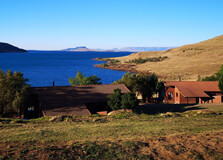
Sterkfontein Dam Reserve, located in the Free State province of South Africa, is a stunning natural area that offers visitors the opportunity to connect with nature and enjoy a range of outdoor activities. The reserve is known for its picturesque landscapes, diverse flora and fauna, and serene atmosphere, making it a popular destination for nature lovers and outdoor enthusiasts. Location and Geographical Overview Sterkfontein Dam Reserve is situated near the town of Harrismith in the Free State province of South Africa. The reserve is located on the banks of the Sterkfontein Dam, a large reservoir that is surrounded by rolling hills, rocky outcrops, and lush vegetation. The dam is fed by the Nuwejaarspruit and other smaller rivers, creating a beautiful and tranquil setting for visitors to enjoy. Open and Closing Time The Sterkfontein Dam Reserve is open to visitors from sunrise to sunset, seven days a week. The reserve's gates open early in the morning and close in the evening, allowing visitors to explore the area and enjoy its natural beauty throughout the day. Entry Fee There is a small entry fee to access the Sterkfontein Dam Reserve, which helps to support the conservation efforts and maintenance of the area. The entry fee is affordable and provides visitors with access to the reserve's hiking trails, picnic areas, and other amenities. Species-Flora/Fauna Availability The Sterkfontein Dam Reserve is home to a wide variety of plant and animal species, making it a haven for wildlife enthusiasts and nature photographers. Visitors can expect to see a range of flora, including grasslands, acacias, and indigenous trees, as well as diverse fauna such as antelope, birds, and smaller mammals. Activities Performed Visitors to the Sterkfontein Dam Reserve can enjoy a range of outdoor activities, including hiking, bird watching, fishing, and picnicking. The reserve boasts several well-marked hiking trails that offer stunning views of the surrounding landscape, as well as designated fishing spots where anglers can try their luck at catching freshwater fish. Jeep Safari Charges For those looking to explore the reserve in a more adventurous way, jeep safaris are available for a fee. Visitors can book a guided jeep safari tour that takes them through the reserve's rugged terrain, offering them a chance to see wildlife up close and experience the beauty of the area in a unique way. Age Criterion and Entry Fee Visitors of all ages are welcome at the Sterkfontein Dam Reserve, with different entry fees for adults, children, and senior citizens. The entry fee varies based on age, with discounted rates available for children and senior citizens. Children under a certain age may also be allowed entry for free. Senior Citizen Facilities The Sterkfontein Dam Reserve offers facilities for senior citizens, including designated seating areas, accessible hiking trails, and restrooms with handicap access. The reserve strives to accommodate visitors of all ages and abilities, making it a welcoming destination for seniors looking to enjoy nature and outdoor activities. Best Time to Visit The best time to visit the Sterkfontein Dam Reserve is during the cooler months of the year, typically from late winter to early spring. The weather is mild and pleasant during this time, making it ideal for outdoor activities such as hiking, bird watching, and picnicking. Visitors can also enjoy the beautiful scenery and wildlife sightings without the heat and humidity of the summer months. Nearby Places to Visit For those looking to explore more of the Free State province, there are several nearby attractions worth visiting. Some popular destinations in the area include the Golden Gate Highlands National Park, Clarens, and the Maloti Drakensberg Route, all of which offer stunning landscapes, outdoor activities, and cultural experiences for visitors to enjoy. Vehicle Parking Facility The Sterkfontein Dam Reserve provides ample parking for visitors, with designated parking areas near the entrance to the reserve. Visitors can park their vehicles securely and conveniently, allowing them easy access to the hiking trails, picnic areas, and other attractions within the reserve. Rules and Regulations Visitors to the Sterkfontein Dam Reserve are asked to adhere to certain rules and regulations to help protect the natural environment and ensure the safety of all visitors. Some common rules include staying on marked trails, not feeding wildlife, and properly disposing of trash. By following these guidelines, visitors can help preserve the beauty of the reserve for future generations to enjoy. How to Reach and Other Related Information The Sterkfontein Dam Reserve is easily accessible by car, with well-maintained roads leading to the entrance of the reserve. Visitors can reach the reserve from major cities such as Johannesburg and Durban via the N3 highway, with signs directing them to the reserve's location near Harrismith. For those traveling from further afield, there are also options for public transportation and guided tours that can provide transportation to and from the reserve.
Explore More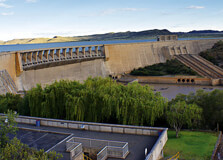
The Gariep Dam Nature Reserve, located in the Free State province of South Africa, is a stunning natural attraction that offers visitors the opportunity to explore a diverse range of flora and fauna. The reserve is situated next to the vast Gariep Dam, which is the largest dam in South Africa and a popular spot for water sports and leisure activities. With its picturesque landscapes and abundance of wildlife, the Gariep Dam Nature Reserve is a must-visit destination for nature lovers and outdoor enthusiasts. Location and Geographical Overview The Gariep Dam Nature Reserve is located near the town of Norvalspont in the Free State province of South Africa. The reserve is situated on the northern shore of the Gariep Dam, which is fed by the Orange River. The surrounding landscape is characterized by rolling hills, rocky outcrops, and open plains, creating a diverse and scenic environment for visitors to explore. Opening and Closing Time The Gariep Dam Nature Reserve is open to visitors from 8am to 5pm, seven days a week. Visitors are advised to check the reserve's official website or contact the visitor center for any updated information on operating hours. Entry Fee There is an entry fee to access the Gariep Dam Nature Reserve, which helps support the conservation efforts and maintenance of the park. The entry fee may vary for different age groups and categories, so visitors are encouraged to inquire about the current rates at the time of their visit. Species-Flora/Fauna Availability The Gariep Dam Nature Reserve is home to a wide variety of plant and animal species, making it a paradise for nature enthusiasts. Visitors can expect to see indigenous flora such as aloes, spekbooms, and acacias, as well as diverse fauna including antelope, zebras, and a variety of bird species. The reserve is also home to smaller mammals like the rock hyrax and dassies, which can be spotted in the rocky terrain. Activities Performed Visitors to the Gariep Dam Nature Reserve can enjoy a range of activities to explore the natural beauty of the area. Popular activities include hiking, bird watching, picnicking, and guided nature walks. The reserve also offers opportunities for fishing, boating, and water sports on the Gariep Dam, allowing visitors to experience the scenic surroundings from a different perspective. Jeep Safari Charges The Gariep Dam Nature Reserve offers jeep safari tours for visitors to explore the reserve and spot wildlife in their natural habitat. The safari charges may vary depending on the duration and type of safari experience offered, so visitors are advised to inquire about the current rates and availability at the visitor center. Age Criterion for Male, Female, Children, and Their Entry Fee The Gariep Dam Nature Reserve may have different entry fees based on age groups, with discounts available for children, senior citizens, and certain categories of visitors. It is recommended to check with the reserve authorities for the specific age criteria and entry fees for male, female, and children at the time of planning a visit. Senior Citizen Facilities The Gariep Dam Nature Reserve may offer special facilities and discounts for senior citizens, making it easier for older visitors to explore the reserve and enjoy the natural beauty of the area. Senior citizen facilities may include wheelchair access, rest areas, and discounted entry fees, providing a comfortable and enjoyable experience for elderly visitors. Best Time to Visit The best time to visit the Gariep Dam Nature Reserve is during the cooler months of autumn and spring when the weather is mild and the landscape is in full bloom. These seasons offer pleasant temperatures for outdoor activities and wildlife sightings, making it an ideal time to explore the reserve and enjoy its natural beauty. Nearby Places to Visit There are several nearby attractions and points of interest that visitors can explore while visiting the Gariep Dam Nature Reserve. Some popular nearby places to visit include the Gariep Dam Wall, the Oviston Nature Reserve, and the Bethulie Museum, providing additional opportunities for sightseeing and cultural experiences in the area. Vehicle Parking Facility The Gariep Dam Nature Reserve offers vehicle parking facilities for visitors, allowing them to safely park their cars while exploring the reserve. Visitors are advised to follow any designated parking areas and guidelines to ensure the safety and security of their vehicles during their visit. Rules and Regulations Visitors to the Gariep Dam Nature Reserve are required to follow certain rules and regulations to protect the natural environment and wildlife within the reserve. Some common rules may include staying on designated trails, refraining from littering, and respecting the flora and fauna in the area. It is important for visitors to adhere to these rules to help preserve the beauty and integrity of the reserve for future generations. How to Reach and Other Related Information The Gariep Dam Nature Reserve is easily accessible by road from major cities in South Africa, with well-maintained highways leading to the entrance of the reserve. Visitors can reach the reserve by car or private transportation, and there are also options for guided tours and transfers available. For more information on how to reach the reserve, including directions, transportation options, and accommodation recommendations, visitors are encouraged to contact the reserve authorities or visit their official website.
Explore More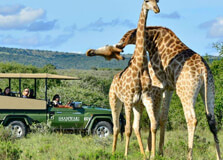
Phezulu Safari Park, located just outside Durban in the scenic Valley of a Thousand Hills, offers a unique blend of wildlife encounters and Zulu cultural experiences. This privately owned park provides visitors with the opportunity to get up close to a variety of animals, including crocodiles and snakes, while also immersing themselves in the rich traditions and heritage of the Zulu people. With its stunning natural setting, engaging shows, and opportunities for interaction with wildlife, Phezulu Safari Park has become a popular destination for tourists and locals seeking an authentic taste of KwaZulu-Natal's natural and cultural treasures. How to reach Phezulu Safari Park, Durban Phezulu Safari Park is situated approximately 35 kilometers west of Durban city center, in the Botha's Hill area of the Valley of a Thousand Hills. Here are the common ways to reach the park: By Car: The most convenient way to reach Phezulu Safari Park is by private vehicle. From Durban, take the N3 highway towards Pietermaritzburg. Take the exit for Old Main Road (Exit 31) and turn left. Follow Old Main Road through Botha's Hill. Look for signs for Phezulu Safari Park, which will be on your right-hand side. The drive typically takes around 30-40 minutes depending on traffic. Ample parking is available at the park. By Taxi or Ride-sharing Services: Taxis and ride-sharing services like Uber or Bolt can take you to Phezulu Safari Park from Durban. However, given the distance, it's advisable to negotiate the fare beforehand or be prepared for a potentially higher cost compared to shorter trips within the city. By Organized Tour: Many tour operators in Durban offer day trips to the Valley of a Thousand Hills, which often include a visit to Phezulu Safari Park. This can be a convenient option as transportation is arranged for you. Weather in Durban Durban experiences a subtropical climate with warm, humid summers and mild, dry winters. The summer months (December to February) typically see average high temperatures around 30°C, accompanied by high humidity and occasional rainfall, often in the form of afternoon thunderstorms. The winter months (June to August) are generally sunny and pleasant, with average daytime temperatures around 23°C. Evenings can be cooler, especially in the Valley of a Thousand Hills. When visiting Phezulu Safari Park, it's advisable to check the weather forecast. During summer, wear light, breathable clothing, sunscreen, and a hat. In winter, layering might be necessary. Be prepared for potential rain, especially during the summer months. Timing Phezulu Safari Park generally has specific opening and closing times, which may vary depending on the season or day of the week. It's recommended to check the official Phezulu Safari Park website or contact them directly for the most accurate and up-to-date information on their operating hours. This will ensure you have sufficient time to enjoy all the attractions and shows the park offers. Typically, safari parks tend to open in the morning and close in the late afternoon or early evening. Specific show times for the Zulu cultural performances and reptile demonstrations will also be available on their website or upon arrival. Why famous for Phezulu Safari Park, Durban? Phezulu Safari Park is famous for a unique combination of wildlife encounters and cultural immersion: Crocodile and Snake Park: The park houses a significant collection of Nile crocodiles and various species of snakes, offering visitors the chance to learn about these fascinating reptiles through informative displays and live demonstrations. Zulu Cultural Village: Phezulu features an authentic Zulu village where visitors can witness traditional Zulu dances, learn about Zulu customs and beliefs, and even interact with the residents. Traditional Zulu Dancing: The energetic and vibrant Zulu dance performances are a major highlight, showcasing the rich cultural heritage and storytelling traditions of the Zulu people. Scenic Location: Situated in the picturesque Valley of a Thousand Hills, the park offers stunning views of the surrounding landscape, adding to the overall visitor experience. Educational Value: Phezulu provides educational opportunities about both wildlife and Zulu culture, making it a great destination for families and school groups. Curio Shop: Visitors can find unique Zulu crafts and souvenirs at the park's curio shop, providing an opportunity to take a piece of the experience home. Entry and visit details about Phezulu Safari Park, Durban To visit Phezulu Safari Park, you will typically need to purchase an entrance ticket. Here are some general details regarding entry and your visit: Entry Fee: There is usually an entrance fee to access Phezulu Safari Park. The fee structure may vary for adults, children, and groups. It's recommended to check the official website for the current ticket prices. Show Schedules: Upon arrival, you will receive a schedule of the Zulu dance performances and reptile demonstrations. Plan your visit accordingly to ensure you don't miss these highlights. Guided Tours: Guided tours of the Zulu village and the reptile park might be available, offering more in-depth information and insights. Inquire about these options upon arrival. Accessibility: The park generally aims to be accessible, but it's advisable to contact them directly if you have specific accessibility requirements to ensure a comfortable visit. Food and Beverages: Phezulu Safari Park usually has a restaurant or tea garden where visitors can purchase meals and refreshments. History Phezulu Safari Park was established with the vision of creating a sustainable tourism venture that celebrates both the natural beauty and the rich cultural heritage of the Valley of a Thousand Hills. The park has been developed over time, starting with the reptile park and gradually expanding to include the Zulu cultural village and other attractions. It has become a significant employer in the local community, providing opportunities for Zulu people to share their traditions and culture with visitors from around the world. The park's commitment to conservation and cultural preservation has made it a respected and valued institution in the region. Architecture The architecture of Phezulu Safari Park is primarily characterized by the traditional Zulu village. The village is constructed using authentic materials and techniques, featuring traditional beehive-shaped huts (imizi) made from woven grass and reeds. The layout of the village reflects the traditional social structure of a Zulu homestead. The reptile park features enclosures designed to mimic the natural habitats of the crocodiles and snakes, while also providing safe and informative viewing areas for visitors. Other structures within the park, such as the restaurant and curio shop, are often designed with a rustic and natural aesthetic to blend in with the surrounding environment. Things to do Phezulu Safari Park offers a variety of engaging activities for visitors: Visit the Crocodile and Snake Park: Get up close to Nile crocodiles and various snake species, and learn about their biology and conservation. Watch Zulu Dance Performances: Experience the energy and rhythm of traditional Zulu dances, complete with vibrant costumes and storytelling through movement. Explore the Zulu Cultural Village: Take a guided tour of the village, learn about Zulu customs, traditions, and the history of the Zulu people. You might even get a chance to interact with the villagers. Enjoy Scenic Views: Take in the breathtaking panoramic views of the Valley of a Thousand Hills from various vantage points within the park. Browse the Curio Shop: Find unique Zulu crafts, artwork, and souvenirs to remember your visit. Dine at the Restaurant: Enjoy a meal or refreshments at the park's restaurant, often offering dishes with local flavors. Photography: Capture the vibrant cultural performances, the wildlife, and the stunning landscapes. Facts about Phezulu Safari Park, Durban Located in the Valley of a Thousand Hills, approximately 35 km from Durban. Features a crocodile and snake park with live demonstrations. Home to an authentic Zulu cultural village offering insights into Zulu traditions. Hosts energetic and captivating traditional Zulu dance performances. Offers stunning panoramic views of the surrounding valley. Provides educational opportunities about wildlife and Zulu culture. Has a curio shop selling local crafts and souvenirs. A privately owned park committed to conservation and cultural preservation. Tips about Phezulu Safari Park, Durban Check the official website for the most up-to-date information on opening hours, ticket prices, and show schedules. Arrive in time for the scheduled Zulu dance performances and reptile demonstrations. Wear comfortable walking shoes as you will be exploring different areas of the park. Bring sunscreen, a hat, and sunglasses, especially during the summer months. Stay hydrated by bringing a water bottle or purchasing drinks at the park. Bring your camera to capture the cultural performances, wildlife, and scenic views. Be respectful of the Zulu culture and customs when visiting the village. Consider purchasing souvenirs from the curio shop to support local artisans. If you are interested in a guided tour of the Zulu village, inquire about availability upon arrival. Combine your visit to Phezulu Safari Park with exploring other attractions in the Valley of a Thousand Hills for a full day trip.
Explore More
Moremi Game Reserve, located in the Okavango Delta of Botswana, is one of the most beautiful and biodiverse game reserves in Africa. Although not directly within Johannesburg, it is one of the most visited game reserves for travelers flying in or out of Johannesburg. It offers some of the most breathtaking landscapes, diverse wildlife, and unforgettable safari experiences. The reserve is part of the larger Okavango Delta, a UNESCO World Heritage site, and covers more than 5,000 square kilometers of pristine African wilderness. How to Reach Moremi Game Reserve, Johannesburg To reach Moremi Game Reserve from Johannesburg, travelers can take a flight to Maun, a major gateway to the Okavango Delta. From Maun, one can take a small light aircraft flight into the reserve or use a 4x4 vehicle to travel across the dirt roads that lead to the park. The air travel option is more common, as it saves time and offers an aerial view of the Delta. The flight typically takes about 1-1.5 hours from Johannesburg to Maun, and then another 30 minutes to an hour to reach Moremi Game Reserve by light aircraft. Weather at Moremi Game Reserve, Johannesburg The weather in Moremi Game Reserve is typical of a tropical climate. The summer months (from November to April) are hot and humid, with temperatures reaching as high as 30-40°C (86-104°F). This period also sees the rainy season, so expect sudden and heavy showers. The winter months (from May to October) are dry and cooler, with temperatures ranging between 15-25°C (59-77°F). Winter is considered the best time to visit, as the wildlife tends to concentrate around the water sources, making it easier for visitors to spot animals during safari drives. Timing to Visit Moremi Game Reserve Moremi Game Reserve is open year-round, but the ideal time to visit depends on what you're hoping to experience. The dry season, from May to October, offers the best game-viewing opportunities because animals gather around waterholes. For birdwatching, the wet season (November to April) is optimal, as migratory birds flock to the reserve. It's essential to note that the park can be quite hot during the day in summer, but the early mornings and late evenings offer the best safari experiences. Why Moremi Game Reserve is Famous Moremi Game Reserve is famous for its incredible diversity of wildlife and stunning landscapes. It is home to some of the Big Five (lions, elephants, leopards, buffalo, and rhinos), as well as numerous other species like cheetahs, wild dogs, hippos, crocodiles, and a vast array of bird species. The reserve is known for its rich ecosystems, including forests, savannahs, lagoons, and floodplains, providing diverse habitats for both terrestrial and aquatic wildlife. The Okavango Delta itself is one of the largest inland deltas in the world and an ecological marvel. It’s considered one of the most unique safari destinations globally due to its mix of land and water experiences. Entry and Visit Details for Moremi Game Reserve Entry to Moremi Game Reserve requires a permit, which can be arranged through the official Botswana Parks website or through your safari operator. There are a variety of accommodation options available, including luxury lodges, tented camps, and mobile campsites. It’s recommended to book accommodations well in advance, as the park is a popular destination. The reserve offers a range of activities for visitors, including game drives, walking safaris, mokoro (dugout canoe) rides, and bird watching excursions. Most visitors typically spend 2-3 days in the reserve to experience its wildlife and landscapes fully. History and Architecture of Moremi Game Reserve The history of Moremi Game Reserve dates back to 1963 when it was established by the Batawana tribe in response to the need for conservation of the unique Okavango Delta region. The reserve was founded by the then-chief of the Batawana people, Moremi, and it’s named in his honor. The architecture within the reserve is mainly focused on eco-friendly and sustainable designs, as it aims to preserve the natural environment while providing visitors with a comfortable stay. The lodges and camps are typically designed to blend into the surroundings, providing minimal disruption to the wildlife and natural landscapes. Things to Do in Moremi Game Reserve There’s plenty to do in Moremi Game Reserve to keep nature enthusiasts and adventure seekers entertained: Game Drives: The reserve offers both morning and evening game drives to view the Big Five and other wildlife in their natural habitat. Mokoro Rides: A traditional dugout canoe ride through the delta’s waterways gives you a unique perspective of the reserve. Walking Safaris: For a more intimate experience, guided walking safaris allow you to explore the reserve on foot. Bird Watching: The wet season is perfect for bird lovers, as the reserve is home to more than 500 bird species. Photography: The picturesque scenery and abundant wildlife make it a paradise for photographers. Facts About Moremi Game Reserve Moremi Game Reserve covers 5,000 square kilometers of land, including both land and water environments. The reserve is home to over 100 species of mammals, 500 species of birds, and more than 1,000 plant species. It was the first game reserve in Botswana to be created by local people, making it a unique model for community-based conservation. The Okavango Delta, which includes Moremi, is considered one of the Seven Natural Wonders of Africa. Tips for Visiting Moremi Game Reserve Pack Appropriately: Ensure you pack light clothing, a hat, sunscreen, and insect repellent. During the cooler months, pack a light jacket or sweater for the evening safaris. Be Patient: Wildlife sightings are not guaranteed, so enjoy the journey and be patient for your chance to see the animals. Respect Wildlife: Always keep a safe distance from the animals and follow the instructions of your guides. Bring a Camera: The beauty of the reserve is simply stunning, so don’t forget to bring a good camera or binoculars for the best experience. Book in Advance: Since it is a popular tourist destination, accommodations in the reserve can fill up quickly, so book your stay well in advance.
Explore More
About Gondwana Private Game Reserve Gondwana Private Game Reserve is a luxurious safari retreat situated along the Garden Route in South Africa. Spanning over 11,000 hectares of pristine wilderness, the reserve offers a unique opportunity to experience the wonders of the African bushveld. Location and Geographical Overview Gondwana Private Game Reserve is located near Mossel Bay, in the Western Cape province of South Africa. The reserve is nestled between the Outeniqua Mountains and the Indian Ocean, providing a diverse landscape that includes rolling hills, lush valleys, and open plains. Open and Closing Time The reserve is open to visitors from 7:00 AM to 5:00 PM daily. Entry Fee The entry fee for Gondwana Private Game Reserve varies depending on the type of experience you choose. Day visitors can purchase a pass for guided game drives or walking safaris, while overnight guests can enjoy all-inclusive packages that include accommodation, meals, and activities. Species-Flora/Fauna Availability Gondwana Private Game Reserve is home to a wide variety of plant and animal species. Visitors can expect to encounter iconic African wildlife such as elephants, lions, rhinos, leopards, giraffes, and zebras, as well as numerous bird species and indigenous vegetation. Activities Performed Visitors to Gondwana Private Game Reserve can enjoy a range of activities, including game drives, bush walks, birdwatching, stargazing, and spa treatments. The reserve also offers cultural experiences, such as visits to local communities and historical sites. Jeep Safari Charges The cost of a jeep safari at Gondwana Private Game Reserve varies depending on the duration and type of experience. Prices start at around $50 USD per person for a two-hour game drive, with discounts available for children and larger groups. Age Criterion and Entry Fee Children under the age of 6 are not permitted on game drives at Gondwana Private Game Reserve. The entry fee for children between the ages of 6 and 12 is half the price of the adult rate, while seniors aged 65 and above receive a discount on entry fees. Senior Citizen Facilities Gondwana Private Game Reserve offers special facilities for senior citizens, including accessible accommodation, transport, and guided activities. The reserve also provides assistance with mobility and medical needs upon request. Best Time to Visit The best time to visit Gondwana Private Game Reserve is during the dry season, which runs from May to September. This period offers cooler temperatures, less rainfall, and optimal wildlife viewing opportunities. Nearby Places to Visit While at Gondwana Private Game Reserve, visitors can explore the nearby Garden Route, which is renowned for its scenic beauty and outdoor activities. Popular attractions in the area include Plettenberg Bay, Knysna, and the Tsitsikamma National Park. Vehicle Parking Facility Gondwana Private Game Reserve provides secure parking for guests who are driving to the reserve. There is ample parking available near the entrance, with designated areas for cars, buses, and RVs. Rules and Regulations Visitors to Gondwana Private Game Reserve are required to follow certain rules and regulations to ensure the safety of both guests and wildlife. These may include guidelines on behavior, photography, noise levels, littering, and interactions with animals. How to Reach and Other Related Information Gondwana Private Game Reserve is easily accessible by road from major cities such as Cape Town and Port Elizabeth. The nearest airport is George Airport, which is approximately a two-hour drive from the reserve. Visitors can also arrange transfers with the reserve or rent a car for self-drive options.
Explore More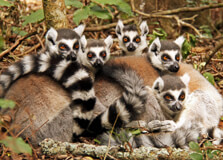
Monkeyland Primate Sanctuary is a unique and ethical eco-tourism attraction located along the Garden Route in South Africa. It is the world's first free-roaming multi-species primate sanctuary, providing a safe haven for rescued and rehabilitated primates. The sanctuary is set in a natural forest environment where the monkeys can roam freely and exhibit their natural behaviors. Location and Geographical Overview Monkeyland Primate Sanctuary is situated in The Crags, just outside Plettenberg Bay on the Garden Route. The sanctuary is nestled within a lush indigenous forest, creating a picturesque and tranquil setting for visitors to enjoy. Opening and Closing Time Monkeyland Primate Sanctuary is open daily from 8:00 am to 5:00 pm, allowing visitors to spend a full day exploring the sanctuary and observing the primates in their natural habitat. Entry Fee There is an entry fee to visit Monkeyland Primate Sanctuary, with rates varying for adults, children, and senior citizens. The entry fee includes a guided tour of the sanctuary and the opportunity to interact with the primates. Species-Flora/Fauna Availability Monkeyland Primate Sanctuary is home to a diverse range of primate species, including lemurs, capuchin monkeys, squirrel monkeys, and more. In addition to the primates, the sanctuary also features a variety of indigenous flora and fauna, adding to the natural beauty of the surroundings. Activities Performed Visitors to Monkeyland Primate Sanctuary can enjoy a guided walking tour of the sanctuary, led by knowledgeable guides who provide insights into the behavior and conservation efforts of the primates. Additionally, visitors can participate in feeding sessions and interact with the monkeys in a safe and controlled environment. Jeep Safari Charges For those looking for a more adventurous experience, Monkeyland Primate Sanctuary offers jeep safari tours through the forest to observe the primates in their natural habitat. There are additional charges for the jeep safari tour, providing an exciting and up-close encounter with the monkeys. Age Criterion and Entry Fee Monkeyland Primate Sanctuary welcomes visitors of all ages, with separate entry fees for adults, children, and senior citizens. Children must be accompanied by an adult to enter the sanctuary, and there are age restrictions for certain activities within the sanctuary. Senior Citizen Facilities Monkeyland Primate Sanctuary caters to senior citizens by providing accessible pathways, seating areas throughout the sanctuary, and guided tours at a leisurely pace. The sanctuary aims to ensure that visitors of all ages can enjoy a comfortable and memorable experience during their visit. Best Time to Visit The best time to visit Monkeyland Primate Sanctuary is during the morning hours when the primates are most active and engaging in their natural behaviors. However, the sanctuary is open throughout the day, allowing visitors to explore at their own pace and enjoy the peaceful surroundings. Nearby Places to Visit Located along the Garden Route, Monkeyland Primate Sanctuary is surrounded by other popular attractions, including Birds of Eden, Jukani Wildlife Sanctuary, and The Elephant Sanctuary. Visitors can easily combine their visit to Monkeyland with exploring these nearby places to make the most of their trip. Vehicle Parking Facility Monkeyland Primate Sanctuary provides ample parking facilities for visitors, with designated parking areas located near the entrance of the sanctuary. Visitors can park their vehicles securely and easily access the sanctuary to begin their tour. Rules and Regulations Visitors to Monkeyland Primate Sanctuary are required to follow certain rules and regulations to ensure the safety and well-being of the primates and other visitors. Some of the rules include refraining from feeding the primates, maintaining a safe distance from the animals, and following the instructions of the guides at all times. How to Reach and Other Related Information Monkeyland Primate Sanctuary is easily accessible by car along the N2 highway, with clear signposts directing visitors to the sanctuary. Additionally, guided tours and transportation services are available from nearby towns and attractions for those without private transportation. For more information on directions, bookings, and special events at the sanctuary, visitors can visit the official Monkeyland website or contact the sanctuary directly. Overall, Monkeyland Primate Sanctuary offers a unique and educational experience for visitors of all ages, allowing them to connect with nature and learn about the conservation efforts being made to protect primate species. With its stunning natural surroundings, diverse primate population, and engaging activities, Monkeyland is a must-visit destination along the Garden Route for wildlife enthusiasts and nature lovers alike.
Explore More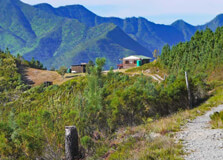
The Outeniqua Nature Reserve is a stunning natural gem located along the Garden Route in South Africa. This reserve is renowned for its diverse flora and fauna, as well as its breathtaking landscapes that attract nature lovers, hikers, and outdoor enthusiasts from around the world. Location and Geographical Overview The Outeniqua Nature Reserve is situated in the heart of the Outeniqua Mountains near George, a town in the Western Cape province of South Africa. The reserve covers an area of over 38,000 hectares and is characterized by lush forests, cascading waterfalls, and a variety of hiking trails that offer panoramic views of the surrounding landscape. Opening and Closing Time The Outeniqua Nature Reserve is open to visitors from sunrise to sunset, seven days a week. It is important to note that the reserve may be closed during certain times of the year for maintenance or other reasons, so it is advisable to check the official website or contact the reserve before planning your visit. Entry Fee There is an entry fee to access the Outeniqua Nature Reserve, which helps support the conservation efforts and maintenance of the park. The exact fee may vary depending on your age and residency status, so be sure to inquire about the current rates before entering the park. Species-Flora/Fauna Availability The Outeniqua Nature Reserve is home to a wide variety of plant and animal species, including rare fynbos vegetation, indigenous birds, and small mammals. Visitors can explore the diverse ecosystems of the reserve and observe the unique flora and fauna that thrive in this natural environment. Activities Performed Visitors to the Outeniqua Nature Reserve can enjoy a range of outdoor activities, including hiking, birdwatching, and picnicking. The reserve offers well-marked trails of varying difficulty levels, making it suitable for both novice hikers and experienced outdoor enthusiasts. Jeep Safari Charges For those looking to explore the reserve in style, jeep safaris are available for an additional fee. These guided tours offer a thrilling adventure through the rugged terrain of the Outeniqua Mountains, allowing visitors to spot wildlife and enjoy the scenic views from the comfort of a vehicle. Age Criterion and Entry Fee The Outeniqua Nature Reserve may have specific entry fees and age criteria for different visitor categories. Children, adults, and senior citizens may have varying rates for entry, so it is advisable to inquire about the pricing structure before planning your visit. Senior Citizen Facilities The Outeniqua Nature Reserve strives to provide a comfortable and enjoyable experience for senior citizens visiting the park. Facilities such as benches, rest areas, and accessible trails are available to ensure that elderly visitors can explore the reserve at their own pace and convenience. Best Time to Visit The best time to visit the Outeniqua Nature Reserve is during the spring and autumn months when the weather is mild, and the landscapes are vibrant with blooming flowers and lush greenery. These seasons offer ideal conditions for hiking, wildlife viewing, and outdoor activities. Nearby Places to Visit While exploring the Outeniqua Nature Reserve, visitors can also explore other attractions in the Garden Route region. Nearby places of interest include the charming town of George, the Outeniqua Transport Museum, and the Garden Route Botanical Gardens, all of which offer unique experiences and cultural insights. Vehicle Parking Facility The Outeniqua Nature Reserve provides ample parking facilities for visitors arriving by car. There are designated parking areas located near the entrance of the reserve, allowing easy access to the hiking trails and other attractions within the park. Rules and Regulations When visiting the Outeniqua Nature Reserve, it is important to adhere to the rules and regulations set by the park authorities to ensure the safety of visitors and the preservation of the natural environment. Some common guidelines include staying on designated trails, avoiding littering, and respecting wildlife habitats. How to Reach and Other Related Information The Outeniqua Nature Reserve is easily accessible by car from the town of George and other major cities in the Western Cape region. Visitors can follow well-marked signs to the park entrance and obtain detailed directions from the official website or visitor center. Additionally, guided tours and transportation services may be available for those seeking a hassle-free way to reach the reserve.
Explore More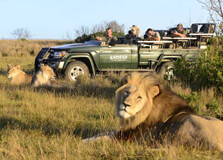
Seaview Predator Park is a popular wildlife park located in the picturesque town of Port Elizabeth, South Africa. The park is home to a variety of exotic animals, including big cats, birds, reptiles, and other wildlife species. Visitors can enjoy up-close encounters with these incredible creatures and learn more about their habitats and conservation efforts. Location and Geographical Overview Seaview Predator Park is situated in the charming coastal town of Port Elizabeth, which is nestled along the shores of Algoa Bay in the Eastern Cape province of South Africa. The park is conveniently located just a short drive from the city center, making it easily accessible for visitors looking to experience the beauty of the African bushveld. Open and Closing Time The park is open to visitors every day of the week, from 9:00 AM to 5:00 PM. It is advisable to arrive early to make the most of your visit and take advantage of all the activities on offer. Entry Fee There is an entry fee to visit Seaview Predator Park, with different rates for adults, children, and senior citizens. The entry fee includes access to all the facilities and activities within the park, making it a great value for money experience. Species-Flora/Fauna Availability Seaview Predator Park is home to a wide range of species, both flora and fauna. Visitors can expect to see majestic big cats such as lions, tigers, and leopards, as well as a variety of bird species, reptiles, and other wildlife. The park is also home to a botanical garden with a diverse collection of plant species, adding to the natural beauty of the surroundings. Activities Performed Visitors to Seaview Predator Park can enjoy a range of activities, including guided tours, animal feedings, and interactive experiences with the wildlife. The park also offers educational programs and conservation initiatives to raise awareness about the importance of protecting these endangered species. Jeep Safari Charges For an unforgettable experience, visitors can embark on a thrilling jeep safari through the park to get up-close and personal with the animals in their natural habitat. There are additional charges for the jeep safari, but it is well worth it for the opportunity to see these magnificent creatures in the wild. Age Criterion and Entry Fee There are specific entry fees for different age groups at Seaview Predator Park. Children under a certain age may be admitted for free, while adults and senior citizens are required to pay a nominal fee. It is advisable to check the park's website for the latest pricing information and age criteria. Senior Citizen Facilities Seaview Predator Park is equipped with facilities to ensure that senior citizens have a comfortable and enjoyable visit. Wheelchair access, rest areas, and guided tours are available for elderly visitors to make their experience as pleasant as possible. Best Time to Visit The best time to visit Seaview Predator Park is during the cooler months of the year, typically from April to September. During this time, the weather is more mild and pleasant, making it ideal for exploring the park and enjoying outdoor activities. Nearby Places to Visit Port Elizabeth is a vibrant city with plenty of attractions and activities for visitors to enjoy. Nearby places of interest include the stunning beaches of Algoa Bay, the Addo Elephant National Park, and the iconic Donkin Reserve. Visitors can also explore the local markets, restaurants, and cultural sites in the area. Vehicle Parking Facility Seaview Predator Park offers ample parking facilities for visitors arriving by car. There is a designated parking area within close proximity to the entrance of the park, making it convenient for guests to park their vehicles and start their wildlife adventure. Rules and Regulations Visitors are required to adhere to certain rules and regulations when visiting Seaview Predator Park to ensure the safety and well-being of the animals and other guests. These rules may include guidelines on behavior, photography, and interaction with the wildlife. It is important to follow these guidelines to have a positive and memorable experience at the park. How to Reach and Other Related Information Seaview Predator Park is easily accessible by car or public transport from Port Elizabeth's city center. Visitors can follow the signs to the park, which is located on the outskirts of town. For more information on how to reach the park, ticket prices, and special events, visitors can visit the official website or contact the park directly. Overall, Seaview Predator Park offers a unique and educational wildlife experience for visitors of all ages. With its stunning natural surroundings, diverse range of species, and exciting activities, it is the perfect destination for nature lovers and animal enthusiasts. Plan your visit today and get ready to embark on an unforgettable adventure in the heart of the African bushveld.
Explore More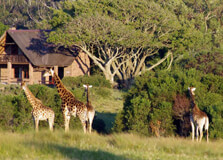
Kragga Kamma Game Park, located just outside Port Elizabeth, is a popular wildlife reserve and one of the best places to experience the diverse and rich wildlife of South Africa. The park spans across a vast area, offering visitors a chance to get up close and personal with a variety of animals, including the famous "Big Five" – lions, elephants, rhinos, buffaloes, and leopards, as well as numerous other species of mammals, birds, and reptiles. It is an excellent destination for anyone interested in nature, wildlife, and the beauty of South Africa’s natural landscapes. How to Reach Kragga Kamma Game Park, Port Elizabeth Getting to Kragga Kamma Game Park is relatively simple, as it is located about 25 kilometers (around 16 miles) from the city center of Port Elizabeth. The most common way to reach the park is by car. Visitors can take the N2 highway from Port Elizabeth and follow the signs toward the Kragga Kamma Game Park. The park is well-marked along the route, and the drive offers a pleasant and scenic journey through the Eastern Cape's countryside. The park also offers guided tours and shuttle services for those who prefer not to drive themselves. Weather The weather at Kragga Kamma Game Park, like most of the Port Elizabeth area, is temperate and mild. The park experiences moderate temperatures year-round, making it an ideal place to visit during any season. Summers (December to February) are warm, with temperatures averaging between 20°C to 30°C (68°F to 86°F). Winters (June to August) are cooler but still mild, with temperatures ranging between 10°C to 20°C (50°F to 68°F). The best time to visit Kragga Kamma Game Park is during the spring and autumn months, as the temperatures are moderate and the wildlife is particularly active during these periods. Timing Kragga Kamma Game Park is open every day of the week, with specific hours of operation for visitors. The park typically opens at 8:00 AM and closes at 5:00 PM. The last entry is at 4:30 PM, so it is advisable to plan your visit accordingly to ensure that you have enough time to explore the park and enjoy the various activities it offers. During peak tourist seasons, such as the summer months, it is a good idea to arrive early to avoid crowds and make the most of your time. Why Famous for Kragga Kamma Game Park, Port Elizabeth? Kragga Kamma Game Park is famous for its commitment to providing a safe haven for a variety of African wildlife, particularly the “Big Five.” Unlike some other game reserves in South Africa, Kragga Kamma is a more intimate and affordable destination for wildlife enthusiasts, offering a chance to see a variety of animals in their natural habitat without the high cost typically associated with larger safari parks. The park is also known for its conservation efforts, as it actively participates in breeding programs and works to protect endangered species. Kragga Kamma is also famous for offering self-drive safaris, which allows visitors to drive through the park and enjoy a more personal, flexible experience with the animals. Entry and Visit Details about Kragga Kamma Game Park, Port Elizabeth Entry to Kragga Kamma Game Park requires the purchase of an admission ticket, which can be bought at the entrance gate. The ticket prices are generally affordable, and the park offers discounts for children, senior citizens, and groups. It is recommended to book your tickets in advance, especially during the peak seasons, to avoid disappointment. The park provides various options for visitors, including self-drive safari tours, guided game drives, and even walking safaris for those who wish to explore the park on foot. Visitors can also enjoy a meal at the park’s restaurant, which offers a selection of delicious local dishes. History and Architecture Kragga Kamma Game Park was established in 1992 with the goal of preserving the local wildlife and providing an opportunity for people to experience the thrill of a safari in the Eastern Cape. The park is privately owned and operated, which allows it to offer a more personalized and hands-on experience compared to larger, state-run reserves. Architecturally, the park does not have monumental buildings or structures but focuses on maintaining the natural environment and minimizing human interference with the ecosystem. The visitor facilities, such as the restaurant and viewing areas, are designed to blend harmoniously with the surrounding landscape and provide unobstructed views of the park’s wildlife. Things to Do at Kragga Kamma Game Park, Port Elizabeth There are plenty of exciting and educational activities to enjoy at Kragga Kamma Game Park: Self-Drive Safari: One of the main attractions at Kragga Kamma is the self-drive safari. Visitors can rent a vehicle or use their own and drive through the park’s various safari routes, spotting wildlife along the way. Guided Game Drives: For those who prefer a more informative experience, the park offers guided game drives, where expert guides share insights about the animals, plants, and conservation efforts in the park. Walking Safaris: For a more intimate experience, walking safaris allow visitors to explore the park on foot, guided by a knowledgeable ranger who can provide detailed information about the wildlife and plants in the area. Bird Watching: Kragga Kamma Game Park is also a great destination for bird watchers. The park is home to a wide variety of bird species, making it an ideal location for both casual bird watchers and serious ornithologists. Visit the Park's Restaurant: The park has a restaurant where visitors can enjoy a meal or a refreshing drink after their safari experience. The restaurant offers views of the park, making it a perfect spot to relax. Facts About Kragga Kamma Game Park, Port Elizabeth The park is home to a wide variety of wildlife, including giraffes, zebras, white rhinos, lions, and various species of antelopes. Kragga Kamma Game Park is a private reserve that spans over 3,000 hectares. The park is involved in conservation efforts, including breeding programs for endangered species like the white rhino and the cheetah. Unlike many larger safari parks, Kragga Kamma offers self-drive safaris, giving visitors the freedom to explore the park at their own pace. The park is known for its affordable prices, making it an accessible option for families and tourists on a budget. Tips for Visiting Kragga Kamma Game Park, Port Elizabeth Wear comfortable clothing and sturdy footwear, as you may be walking over uneven terrain during the safari. Bring a camera with a zoom lens to capture photos of the wildlife from a distance. Don't forget sunscreen and a hat to protect yourself from the sun, especially during the summer months. Book your safari or game drive in advance, especially if you're visiting during the busy season. Keep your windows closed during self-drive safaris to ensure your safety and avoid disturbing the animals. Be patient – wildlife encounters can sometimes take time, but with persistence, you'll enjoy memorable sightings.
Explore More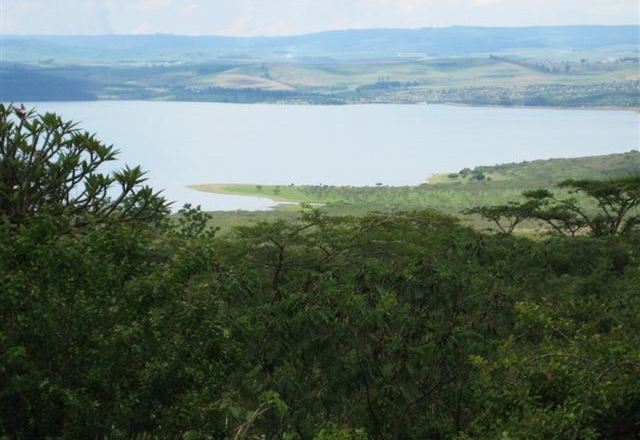
Albert Falls Dam Nature Reserve
About Albert Falls Dam Nature Reserve The Albert Falls Dam Nature Reserve is a picturesque destination located in KwaZulu-Natal, South Africa. Situated near the town of Pietermaritzburg, this nature reserve is known for its stunning landscapes, diverse wildlife, and historic battlefields. Location and Geographical Overview The Albert Falls Dam Nature Reserve is located along the banks of the Msunduzi River, about 20 kilometers from Pietermaritzburg. The reserve covers an area of approximately 4,600 hectares and is home to the iconic Albert Falls Dam, which is a popular spot for water sports and fishing. Open and Closing Time The Albert Falls Dam Nature Reserve is open to visitors from 6:00 am to 6:00 pm daily. Entry Fee There is an entry fee of R40 for adults and R20 for children under the age of 12. Species-Flora/Fauna Availability The Albert Falls Dam Nature Reserve is home to a wide variety of plant and animal species. Visitors can expect to see numerous bird species, including fish eagles, kingfishers, and herons. The reserve also boasts a diverse range of wildlife, such as zebra, giraffe, wildebeest, and antelope. Activities Performed Visitors to the Albert Falls Dam Nature Reserve can enjoy a range of activities, including game drives, bird watching, fishing, hiking, and picnicking. The reserve is also a popular spot for water sports, such as boating, canoeing, and kayaking. Jeep Safari Charges Jeep safari tours are available at the Albert Falls Dam Nature Reserve for an additional fee. Prices vary depending on the duration and type of safari tour chosen. Age Criterion and Entry Fee Children under the age of 12 can enter the Albert Falls Dam Nature Reserve for R20. There is no specific age criterion for males and females, as the entry fee is the same for all adults. Senior Citizen Facilities The Albert Falls Dam Nature Reserve offers discounted entry rates for senior citizens. Visitors aged 60 and above can enter the reserve for a reduced fee. Best Time to Visit The best time to visit the Albert Falls Dam Nature Reserve is during the cooler months of the year, from April to September. The weather is milder during this time, making it ideal for outdoor activities such as hiking and game viewing. Nearby Places to Visit There are several other attractions near the Albert Falls Dam Nature Reserve that visitors can explore, including historical battlefields, cultural sites, and nature reserves. Some popular nearby destinations include the Tala Private Game Reserve, the Nelson Mandela Capture Site, and the Midlands Meander. Vehicle Parking Facility The Albert Falls Dam Nature Reserve offers ample parking space for visitors. There are designated parking areas near the entrance of the reserve, as well as additional parking facilities near the various activity areas. Rules and Regulations Visitors to the Albert Falls Dam Nature Reserve are required to adhere to certain rules and regulations to ensure the safety of both themselves and the wildlife. Some common regulations include staying on designated paths, refraining from feeding the animals, and avoiding littering. How to Reach and Other Related Information The Albert Falls Dam Nature Reserve is easily accessible by car from Pietermaritzburg, which is approximately a 30-minute drive away. Visitors can follow the signs from the town to the reserve entrance. For those traveling from further afield, there are also bus and shuttle services available that provide transportation to the reserve. Overall, the Albert Falls Dam Nature Reserve is a must-visit destination for nature enthusiasts, history buffs, and outdoor adventurers alike. With its stunning landscapes, diverse wildlife, and range of activities, this reserve offers something for everyone to enjoy.
Explore More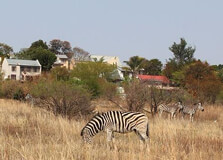
Moreleta Kloof Nature Reserve was established in 1988, primarily to protect the indigenous flora and fauna of the region. The area, which is part of the larger Pretoria Nature Reserve, is situated on the Moreleta Spruit, a small river that runs through the area. Over the years, the reserve has grown into a vital green space for conservation efforts and public education regarding environmental preservation. The reserve is named after the Moreleta Spruit, which meanders through the kloof (a narrow valley or ravine), creating a natural habitat for a variety of animals, birds, and plant species. The area’s rich biodiversity and picturesque landscapes make it an important ecological site. Since its inception, Moreleta Kloof has become a popular destination for nature lovers and families seeking outdoor recreation in the heart of Pretoria. Why is Moreleta Kloof Nature Reserve Famous? Moreleta Kloof Nature Reserve is famous for its remarkable diversity of plant and animal life. The reserve is home to a variety of wildlife, including antelope, baboons, and a wide range of bird species. Visitors can often spot zebra, kudu, and duiker grazing in the reserve's open areas. The presence of diverse habitats, from grasslands to wooded areas, allows for an impressive range of flora and fauna. Another reason for its fame is its accessibility. Unlike many remote nature reserves, Moreleta Kloof is located within Pretoria, making it a convenient destination for residents and tourists alike. It is also known for its well-maintained walking trails that allow visitors to explore the reserve on foot, providing an immersive experience in nature. The fact that the reserve is close to the city means that it is a popular destination for locals looking to escape the urban environment without traveling far. How to Reach Moreleta Kloof Nature Reserve Moreleta Kloof Nature Reserve is centrally located in Pretoria, making it easy to reach by car or public transportation. It is situated in the eastern part of the city, off De Villebois Mareuil Drive, and is just a short distance from major roads and highways, such as the N1. Visitors can drive to the reserve from the city center in approximately 20 minutes, depending on traffic. If you're using public transport, taxis and ride-sharing services like Uber are readily available and provide a convenient option for visitors. The reserve is also accessible by bus, though you may need to take a short walk from the nearest bus stop to the entrance. Weather in Moreleta Kloof Nature Reserve Moreleta Kloof Nature Reserve enjoys a warm, subtropical climate with hot summers and mild winters. During the summer months (November to March), temperatures can soar above 30°C (86°F), and afternoon thunderstorms are common. Visitors during this period should dress lightly, bring sunscreen, and carry water to stay hydrated. In the winter months (May to August), temperatures are milder, ranging from 5°C to 20°C (41°F to 68°F). While it is mostly sunny during the day, temperatures can drop in the evening, so visitors should bring a jacket or sweater if visiting in winter. The autumn (April) and spring (September to October) months are often regarded as the best time to visit, as the weather is pleasant, and the vegetation is lush. Timing and Opening Hours Moreleta Kloof Nature Reserve is open every day of the week, from 6:00 AM to 6:00 PM. The reserve operates year-round, allowing visitors to enjoy nature at any time during these hours. Early morning visits are particularly enjoyable, as the reserve is calm, and wildlife is more active during the cooler parts of the day. The late afternoon is also a great time to visit if you want to see animals in their natural habitat as they come out to feed. Entry and Visit Details The entry to Moreleta Kloof Nature Reserve is generally free for the public. However, visitors are encouraged to make a voluntary contribution towards the upkeep of the reserve. The reserve is managed by the City of Tshwane, and it is essential for visitors to respect the guidelines set by the park authorities to ensure the continued preservation of the area. While visiting, be sure to bring comfortable walking shoes, a hat, and a camera to capture the natural beauty of the reserve. It is also advised to bring a bottle of water, as there are limited facilities available in the reserve. If you are interested in guided tours, these are available upon request, offering more in-depth knowledge of the flora, fauna, and history of the reserve. Things to Do in Moreleta Kloof Nature Reserve Moreleta Kloof Nature Reserve offers a wide range of activities for nature lovers and outdoor enthusiasts. Some of the top things to do include: Hiking: The reserve features a number of scenic walking trails suitable for all levels of hikers. The trails vary in difficulty and distance, so visitors can choose one that matches their preferences. Walking through the reserve allows you to experience its diverse ecosystems, from woodlands to open grasslands. Bird Watching: Moreleta Kloof is a haven for birdwatchers, with over 160 bird species recorded in the reserve. From the majestic black eagle to the colorful sunbirds, there are plenty of opportunities to spot local and migratory birds. The bird hides and observation areas provide great vantage points. Wildlife Spotting: The reserve is home to a variety of mammals, including zebra, kudu, impala, and even occasional sightings of the elusive leopard. Visitors can enjoy spotting these animals as they roam freely in the reserve's natural environment. Picnicking: While there are no formal picnic areas, the serene surroundings make it a perfect spot to enjoy a peaceful meal in nature. Many visitors take a picnic basket and enjoy lunch while surrounded by trees and wildlife. Facts about Moreleta Kloof Nature Reserve The reserve covers an area of approximately 1,000 hectares, providing ample space for wildlife and outdoor activities. It is home to over 160 bird species, including a variety of raptors, making it a popular spot for birdwatching. Moreleta Kloof is situated on the Moreleta Spruit, which is a small river that flows through the reserve, creating a lush environment for plant and animal life. The reserve has a diverse range of ecosystems, including grasslands, wetlands, and forests, supporting a wide variety of flora and fauna. It is one of Pretoria’s most popular nature reserves due to its proximity to the city center and its well-maintained trails and facilities. Tips for Visiting Moreleta Kloof Nature Reserve Plan your visit during the cooler months (autumn or spring) to avoid the heat of summer. Wear comfortable walking shoes as some trails can be uneven and rocky. Bring sunscreen, a hat, and plenty of water, especially if you plan to walk the trails or hike in the sun. Respect the wildlife and avoid getting too close to the animals. Keep a safe distance for both your safety and theirs. Don’t forget your camera! The stunning landscapes, wildlife, and plant life provide excellent photo opportunities. Conclusion Moreleta Kloof Nature Reserve is an excellent destination for those looking to enjoy the beauty of nature while being close to the city. With its rich biodiversity, scenic walking trails, and diverse wildlife, it offers a peaceful and educational experience for visitors of all ages. Whether you're a nature enthusiast, a birdwatcher, or simply looking for a tranquil retreat, Moreleta Kloof Nature Reserve is the perfect place to explore Pretoria's natural beauty.
Explore More8D - 7N South Africa Tour Package
8 Days/ 7 Night
Limpopo - Garden Route - Cape Town
10 Day Luxury Tour Itinerary For South Africa And Botswana
10 Days/ 9 Night
Cape Town - Johannesburg - Maun - Okavango Delta
South African Safari Holidays
8 Days/ 7 Night
Limpopo - Johannesburg - Kapama
Cape Town Discovery Itinerary Tour
8 Days/ 7 Night
Cape Town
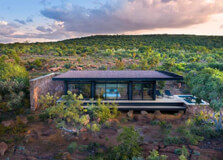
Nestled in the heart of the Waterberg Biosphere in Limpopo Province, Welgevonden Game Reserve near Vaalwater is one of South Africa’s premier private game reserves. Covering over 36,000 hectares, Welgevonden is malaria-free and offers a luxurious, conservation-conscious safari experience. This reserve is home to over 50 mammal species, including the Big Five — lion, leopard, elephant, rhino, and buffalo — as well as a variety of birdlife and unique flora. It combines the thrill of a traditional African safari with the comfort and exclusivity of upscale lodges, making it a perfect getaway for wildlife lovers and nature enthusiasts. How to Reach Welgevonden Game Reserve, Vaalwater Welgevonden is conveniently accessible from major cities, especially Johannesburg and Pretoria: By Car: The reserve is about 2.5 to 3 hours’ drive (approximately 260 km) from Johannesburg via the N1 highway to Vaalwater. From Vaalwater, the reserve’s main gate is about 40 minutes away. By Air: Charter flights are available to the reserve’s airstrips from Johannesburg’s OR Tambo International Airport. Some lodges offer fly-in safari packages. Transfers: Many lodges arrange private or shared road transfers from Gauteng upon request. Weather Welgevonden Game Reserve enjoys a warm, semi-arid climate: Summer (October to March): Warm to hot, with temperatures ranging from 20°C to 35°C. This is the rainy season, and the bush is green and lush. Winter (May to August): Dry season with cooler temperatures ranging from 5°C in the morning to 22°C during the day. Ideal for game viewing due to sparse vegetation and animals gathering around waterholes. Wildlife sightings are excellent year-round, but winter is generally preferred for safari visibility. Timing Welgevonden Game Reserve is open year-round, and most lodges welcome guests at any time. Game drives are scheduled twice daily — usually early in the morning and late afternoon. Check-in at lodges is typically from 2:00 PM, with check-out by 11:00 AM. Why Famous for Welgevonden Game Reserve, Vaalwater? Welgevonden is famous for its conservation-focused tourism, luxurious safari lodges, and exceptional game viewing without the crowds often found in public reserves. Its malaria-free status is a major attraction, especially for families. The reserve also stands out for its research and sustainable eco-tourism initiatives. Its wide variety of landscapes — from grassy plains and river ravines to rocky hills — makes it a haven for diverse wildlife species. Entry and Visit Details about Welgevonden Game Reserve, Vaalwater Welgevonden is a private reserve, and access is restricted to guests with confirmed bookings at one of the lodges within the reserve. There is no self-driving allowed; all game viewing is done via lodge-organized guided game drives in open 4x4 vehicles. Entrance: Guests must check in at the Main Gate, East Gate, or South Gate and park their private vehicles in secure areas. Lodge vehicles transfer guests to accommodations. Fees: Conservation and gate fees are generally included in the lodge booking, but it’s advisable to confirm this while reserving. Guided Access: Experienced field guides accompany all drives, ensuring safety and enriching the wildlife experience. History and Architecture Welgevonden means "well found" in Dutch and was declared a game reserve in 1993. The area once comprised various private farms that were rehabilitated into a wildlife sanctuary, aligning with Waterberg’s status as a UNESCO-designated biosphere reserve. Today, it is one of the most significant conservation areas in the region. The lodges in Welgevonden blend modern comfort with African design aesthetics. Thatched roofs, stone facades, and eco-friendly architecture complement the surrounding bushveld, offering a luxurious yet rustic charm. Many lodges are built with minimal environmental impact and incorporate solar power and sustainable water usage systems. Things to Do Big Five Game Drives: Twice-daily safaris provide close-up sightings of Africa’s most iconic animals. Bird Watching: Spot over 300 species of birds, including raptors and waterbirds. Guided Bush Walks: Available at some lodges for a deeper, more intimate experience of the ecosystem. Photographic Safaris: Specialized drives focus on wildlife and landscape photography. Relaxation: Enjoy spa treatments, infinity pools, or stargazing in the tranquil surroundings of your lodge. Facts about Welgevonden Game Reserve, Vaalwater The reserve covers over 36,000 hectares of protected wilderness. It is part of the UNESCO-recognized Waterberg Biosphere Reserve. Welgevonden is home to over 50 species of mammals and more than 300 bird species. The reserve has no malaria risk, making it safe for children and older visitors. There are over 20 exclusive lodges in the reserve, each offering personalized experiences. Tips about Welgevonden Game Reserve, Vaalwater Book in Advance: Lodges fill up quickly, especially during holidays and winter months. Pack Smart: Bring neutral-colored clothing, a hat, sunscreen, insect repellent, and binoculars. Photography: A good zoom lens and extra memory cards will come in handy. Hydration: Carry a reusable water bottle; bottled water is usually provided at lodges. Gratuity: Tipping your guide and lodge staff is customary and appreciated. Health Precautions: No malaria pills are needed, but it's still wise to use repellent at night.
Explore More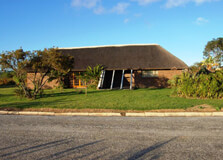
Van Stadens Wildflower Reserve
Van Stadens Wildflower Reserve is a stunning natural sanctuary located approximately 40 kilometers west of Gqeberha (formerly known as Port Elizabeth) in the Eastern Cape, South Africa. Renowned for its incredible biodiversity and breathtaking floral displays, the reserve is a hidden gem for nature lovers, photographers, hikers, and anyone looking to immerse themselves in indigenous vegetation and serene landscapes. The reserve spans over 600 hectares and is especially famous for its fynbos vegetation and South Africa’s national flower — the King Protea. How to Reach Van Stadens Wildflower Reserve, Gqeberha Reaching Van Stadens Wildflower Reserve is quite straightforward for those coming from Gqeberha. By Car: Take the N2 highway heading west from Gqeberha. After about 40 kilometers, follow the signs to the Van Stadens area and turn off towards the reserve. There is signage at the entrance, and ample parking is available inside. By Taxi or Shuttle: Although public transportation is limited, private shuttles and local taxi services may offer rides to the reserve by prior arrangement. Weather The climate in and around Gqeberha is temperate, making Van Stadens Wildflower Reserve an all-season destination. Summers (November to March) are warm with average temperatures ranging from 20°C to 28°C, while winters (June to August) are mild, with temperatures between 10°C and 20°C. Rainfall occurs sporadically throughout the year, with spring (September to November) being the best time to see the wildflowers in full bloom. Timing The Van Stadens Wildflower Reserve is typically open daily from 8:00 AM to 5:00 PM. There is no entrance fee, which makes it an accessible and budget-friendly destination. Visitors are encouraged to check ahead during public holidays or the festive season for any changes in timing. Why Famous for Van Stadens Wildflower Reserve, Gqeberha? The reserve is famous for preserving and showcasing a wide variety of native flora, particularly fynbos, which is unique to the Cape Floristic Region. The Van Stadens Wildflower Reserve is considered a critical conservation area and an environmental education site. The reserve also features the famous Van Stadens Bridge nearby, which adds to the natural and engineering appeal of the area. Birdwatchers, hikers, and botanists flock here for the region’s biodiversity, which includes more than 400 plant species. Entry and Visit Details about Van Stadens Wildflower Reserve, Gqeberha Entry to the reserve is free, and it operates on a day-visit basis. There is a gatehouse where visitors can collect brochures or maps. The main activities include hiking, birdwatching, and photography. There are designated trails of varying difficulty and several picnic areas equipped with tables and shade. Facilities like restrooms and drinking water points are available, but limited, so visitors are advised to bring essentials. History and Architecture Van Stadens Wildflower Reserve was established in 1951, making it one of South Africa’s oldest reserves focused on indigenous flora. The main purpose behind its establishment was to preserve the region’s rich floral biodiversity, especially the threatened species of fynbos. There are no major architectural structures in the reserve, maintaining the focus on unspoiled nature. However, nearby landmarks like the Van Stadens Bridge — a concrete arch bridge built in 1971 — is a remarkable example of mid-20th-century civil engineering and can be seen from the reserve. Things to Do Hiking: Explore various hiking trails, ranging from easy walks to more strenuous routes through fynbos and forested areas. Birdwatching: Over 170 bird species have been recorded in the reserve, including the Knysna loerie and sunbirds. Floral Viewing: Witness the stunning diversity of wildflowers in spring and early summer, including proteas, ericas, and bulbs. Picnicking: Enjoy a quiet meal in one of the well-maintained picnic spots surrounded by natural beauty. Photography: Capture the seasonal beauty of flowers, landscapes, birds, and insects. Educational Tours: The reserve occasionally offers guided tours and educational programs for schools and nature groups. Facts about Van Stadens Wildflower Reserve, Gqeberha Home to over 400 species of indigenous plants, many of which are endemic to the region. The Van Stadens River Gorge within the reserve offers dramatic cliffs and lush vegetation. The King Protea (South Africa’s national flower) grows abundantly in the reserve. It serves as an important site for scientific research and conservation education. The Van Stadens Bridge nearby is 140 meters above the gorge and was once the highest bridge in Southern Africa. Tips about Van Stadens Wildflower Reserve, Gqeberha Visit in Spring: September to November is the best time to witness the wildflowers in full bloom. Wear Comfortable Shoes: Trails can be uneven and natural, so suitable hiking footwear is recommended. Bring Binoculars: Ideal for birdwatching enthusiasts looking to spot rare species. Pack Water and Snacks: There are limited facilities inside, so carry your own refreshments. Respect Nature: Do not pick flowers or disturb wildlife. Stay on marked paths. Check the Weather: Trails can get slippery after rain. Dress accordingly for weather conditions. Travel Early: Morning visits provide the best light for photography and cooler temperatures for hiking.
Explore More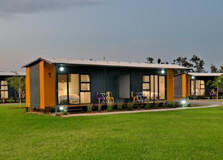
Spitskop Nature Reserve is a peaceful and scenic wildlife sanctuary located just outside the town of Upington in the Northern Cape province of South Africa. Known for its wide-open landscapes, red Kalahari sands, and a variety of desert-adapted wildlife, the reserve is a perfect stop for travelers seeking tranquility and close encounters with nature. It’s an ideal place for birdwatching, self-drive game viewing, and picnicking under the vast African skies. How to Reach Spitskop Nature Reserve, Upington Spitskop Nature Reserve is located approximately 13 kilometers north of Upington along the N14 route, making it easily accessible by car. From the town center, it takes about 10 to 15 minutes to reach the entrance. Upington is well-connected by air and road. Daily flights from Johannesburg and Cape Town land at Upington Airport (UPN), which is only about 20 minutes away from the reserve. Taxis and car rentals are available at the airport and in the town. Weather The reserve experiences a typical semi-arid climate, with extremely hot summers and mild, dry winters. During summer (October to March), temperatures often soar above 35°C (95°F), while winter days (May to August) are sunny and pleasant, with temperatures between 20°C to 25°C (68°F to 77°F). Nights can be chilly in winter. Rain is rare and mostly falls in late summer months. The cooler months are generally the best time to visit for outdoor activities. Timing Spitskop Nature Reserve is open daily from 7:00 AM to 6:00 PM. Visitors are allowed to explore the reserve in their own vehicles during these hours. It’s advisable to enter early in the morning or late in the afternoon, when wildlife is most active and temperatures are more comfortable. The reserve does not currently offer overnight accommodation, so visitors should plan for a day trip. Why Famous for Spitskop Nature Reserve, Upington? Spitskop Nature Reserve is known for its serene desert scenery and accessibility from the town of Upington. It’s especially famous for its unique red sand dunes, typical of the southern Kalahari region. The reserve is home to a range of wildlife species, including gemsbok, springbok, kudu, eland, and many types of birds. It offers visitors a peaceful alternative to larger, busier game reserves, making it an excellent destination for photographers, nature lovers, and those looking for a quiet nature retreat near the city. Entry and Visit Details about Spitskop Nature Reserve, Upington Entry to Spitskop Nature Reserve is affordable, with a small conservation fee payable at the gate. The reserve is operated by the Dawid Kruiper Municipality, and current entry prices can be confirmed at the Upington tourism office or local information centers. Visitors can bring their own vehicles for a self-guided drive through the reserve’s well-maintained gravel roads. While the reserve doesn’t offer large-scale facilities, there are shaded picnic spots and ablution blocks available for day visitors. It is advisable to bring your own food, water, and binoculars for a more comfortable and enjoyable experience. History and Architecture Spitskop Nature Reserve was established as a conservation and recreational area for the residents of Upington and tourists traveling through the Kalahari region. While it does not have significant architectural structures, the natural features of the reserve serve as its main attractions. “Spitskop” refers to the sharp, pointed hill located in the reserve, which serves as a notable landmark. The surrounding environment has remained relatively untouched, offering visitors a glimpse into the original Kalahari ecosystem. Things to Do 1. Game Viewing: Drive along the scenic routes and spot antelope, giraffes, zebras, and other wildlife in their natural environment. 2. Bird Watching: The reserve is home to numerous bird species including weavers, eagles, and sociable weaver colonies. 3. Photography: Capture the vibrant contrasts of red sands, golden grasses, and blue skies – perfect for landscape and wildlife photography. 4. Picnicking: Enjoy a peaceful picnic at one of the shaded areas while soaking in the natural surroundings. 5. Nature Walks: While guided hikes are not officially offered, some areas are suitable for short, safe walks near designated zones. 6. Educational Visits: Local schools often use the reserve as an outdoor classroom for environmental education. 7. Stargazing: The open desert skies provide brilliant night-time views of the stars, especially during new moon phases. Facts about Spitskop Nature Reserve - The reserve spans approximately 5,600 hectares. - "Spitskop" refers to the prominent hill that gives the reserve its name. - It is one of the closest nature reserves to the town of Upington. - The area supports desert-adapted species like oryx, steenbok, and reptiles. - The red sand of the Kalahari creates a visually striking contrast with the dry grasses and scrub vegetation. - It is a popular spot for Upington locals seeking quiet nature-based outings. Tips for Visiting Spitskop Nature Reserve, Upington - Go early or late: Wildlife is most active during the cooler parts of the day. - Pack supplies: Bring plenty of drinking water, snacks, and a hat, as there are limited amenities. - Drive slowly: Animals often cross the gravel roads – be cautious and patient. - Bring binoculars: For better views of animals and birds at a distance. - Check your fuel: Ensure your vehicle has enough fuel, as there are no petrol stations in the reserve. - Wear appropriate shoes: If you plan to walk near picnic spots, closed shoes are recommended. - Leave no trace: Help keep the reserve clean by taking all rubbish with you. - Respect nature: Stay inside your vehicle when not in designated picnic or rest areas.
Explore More